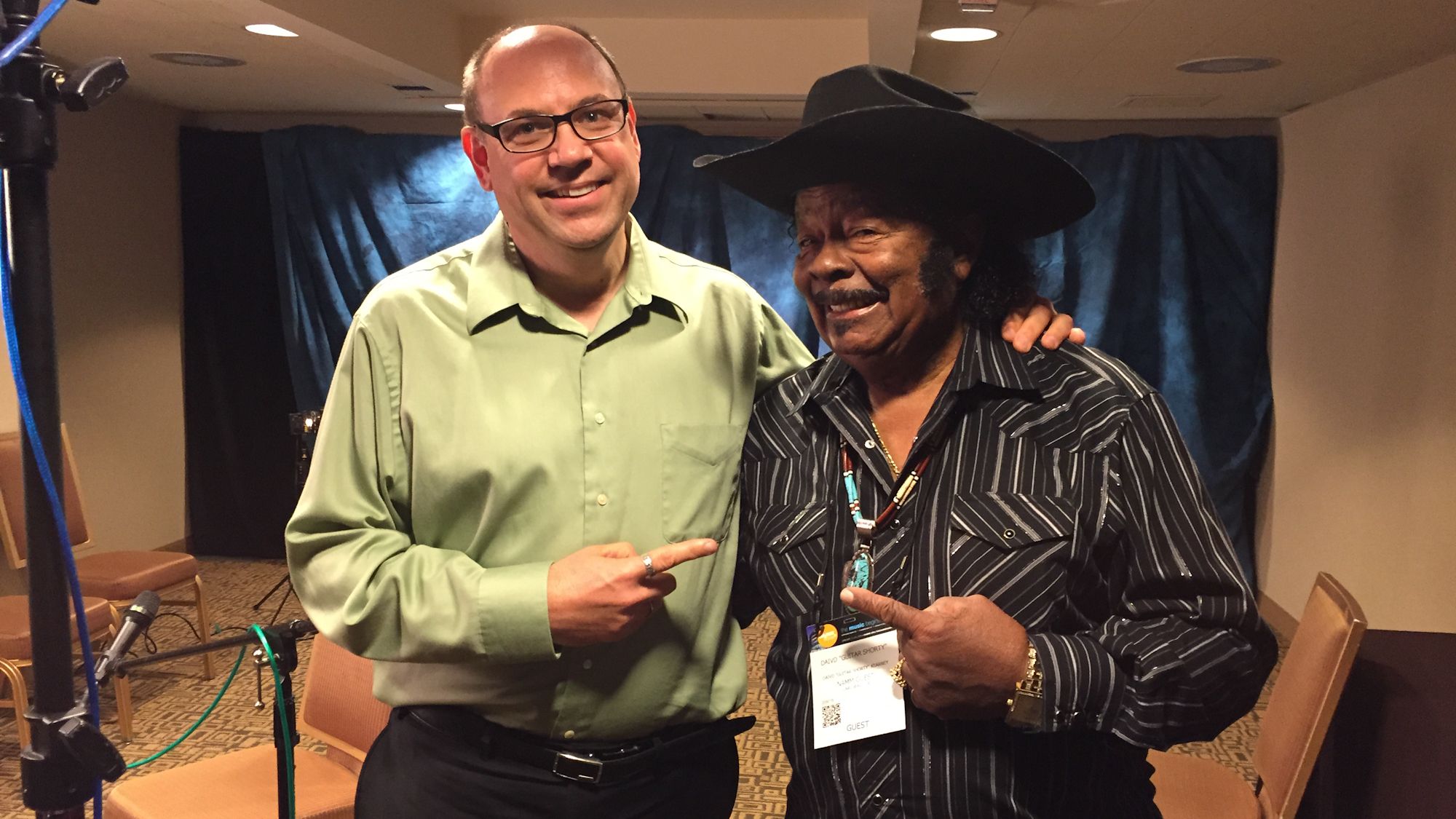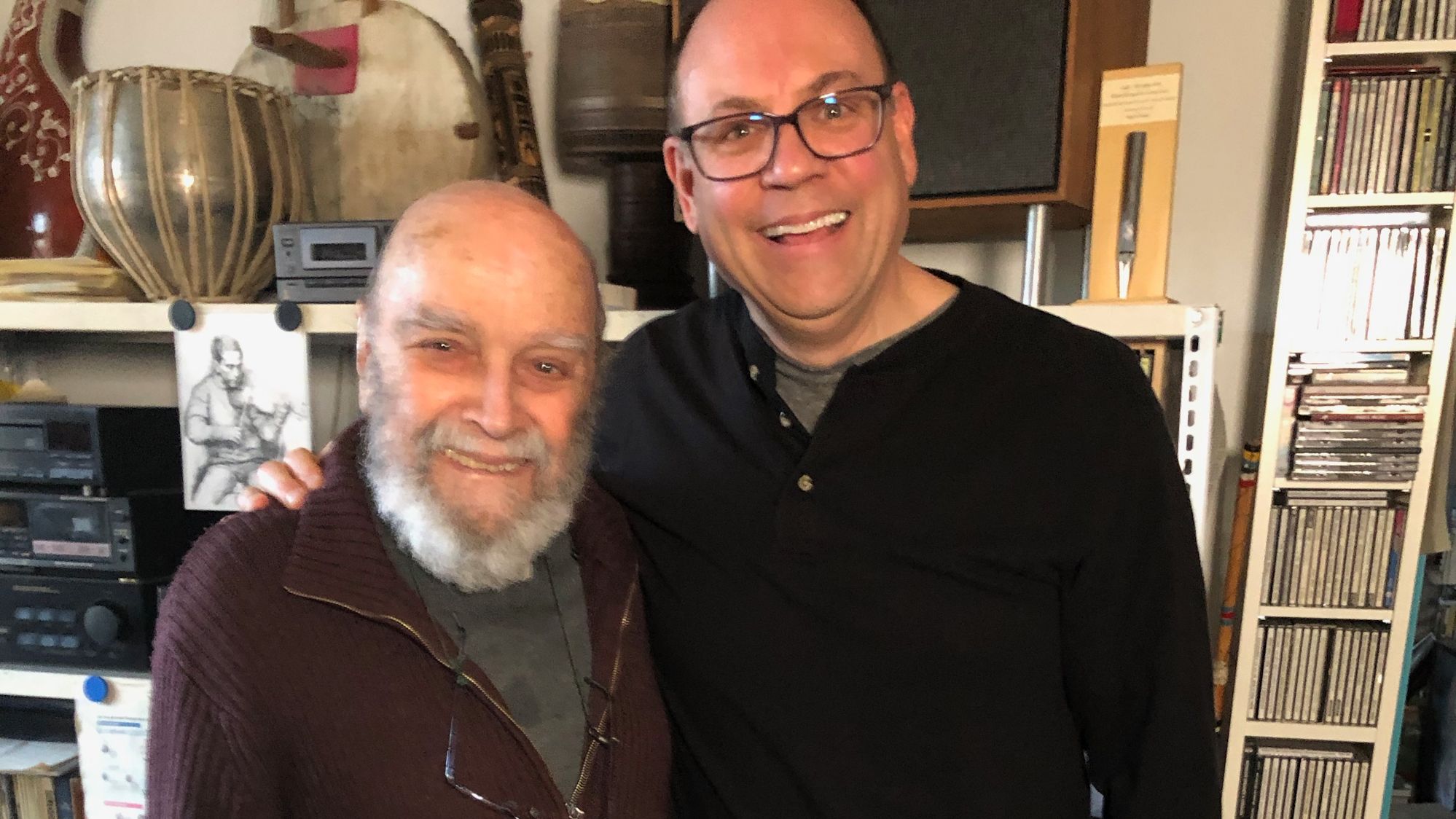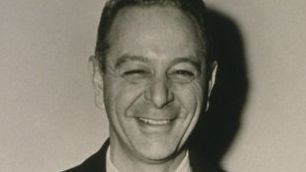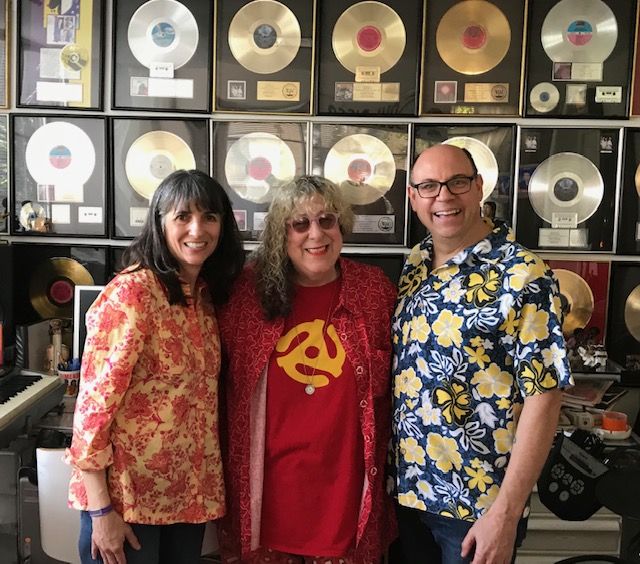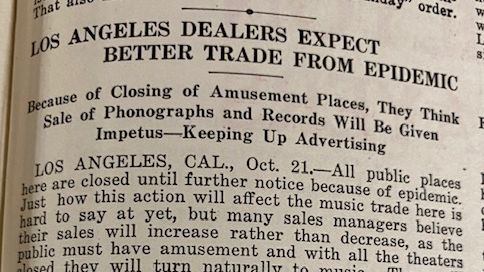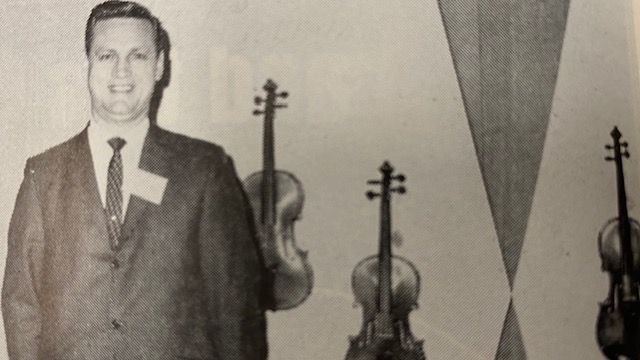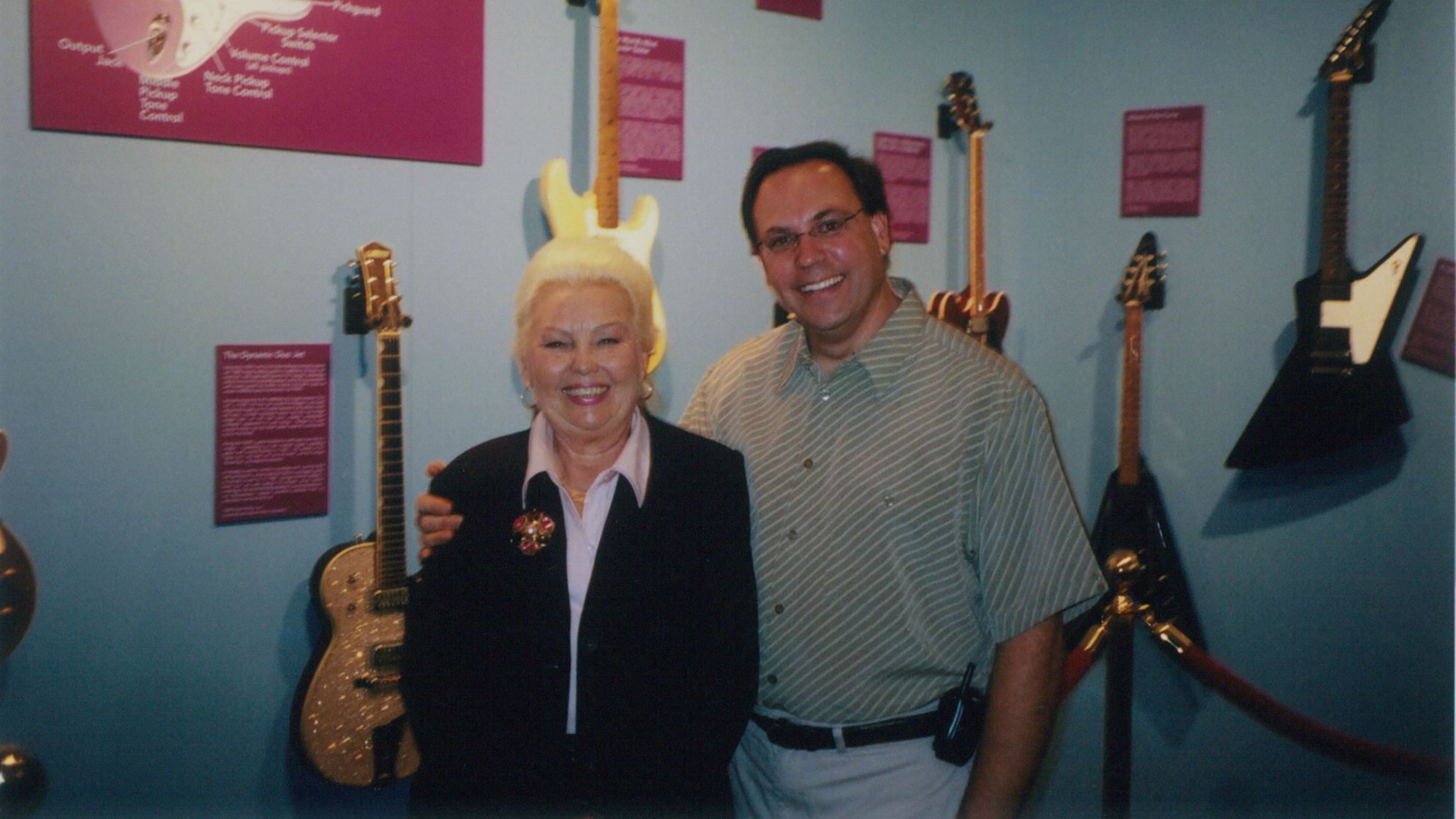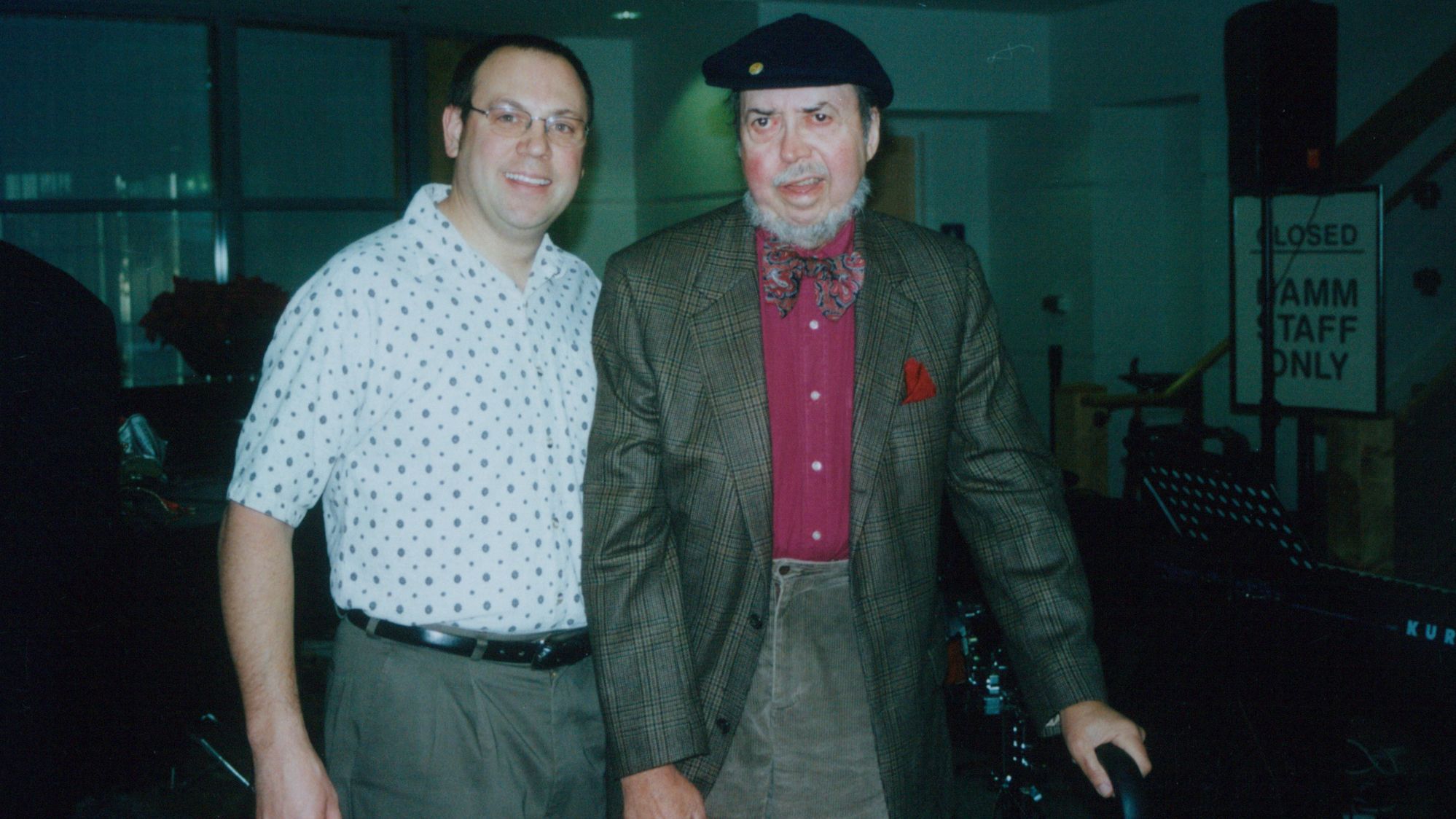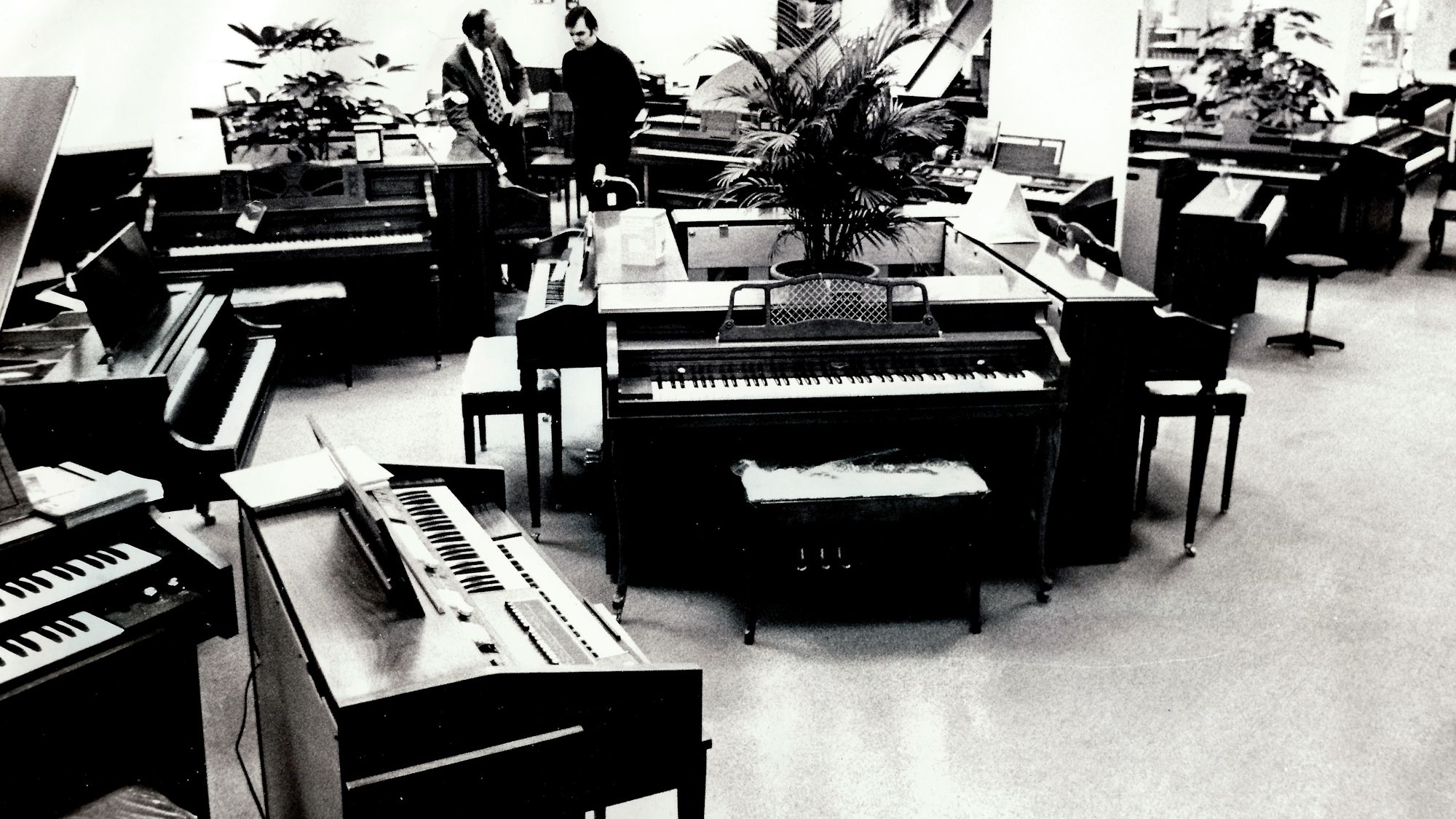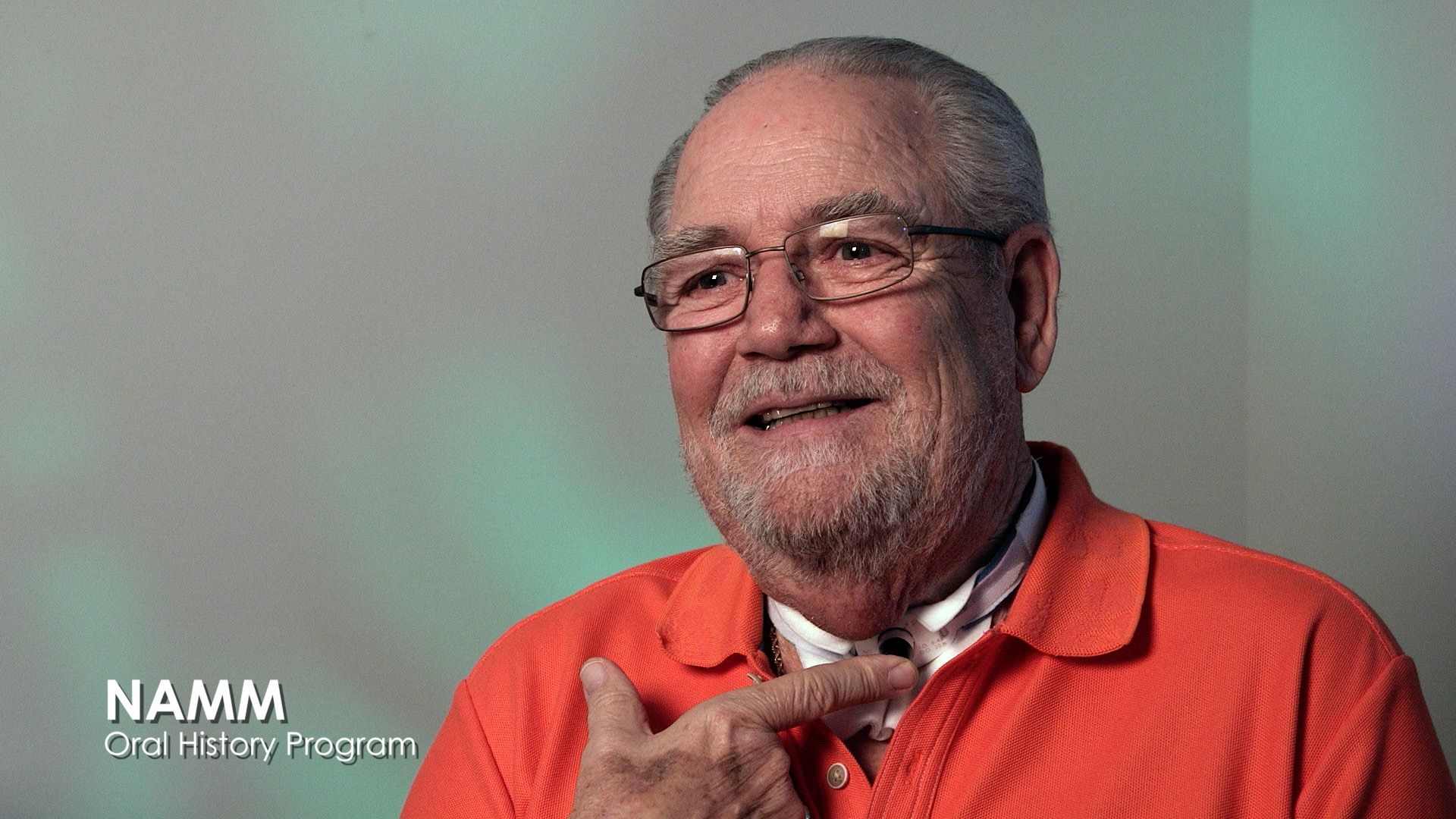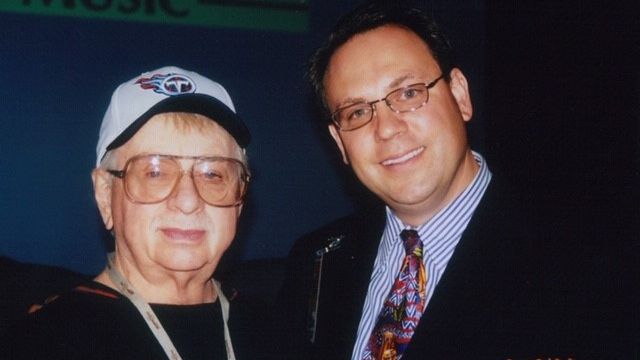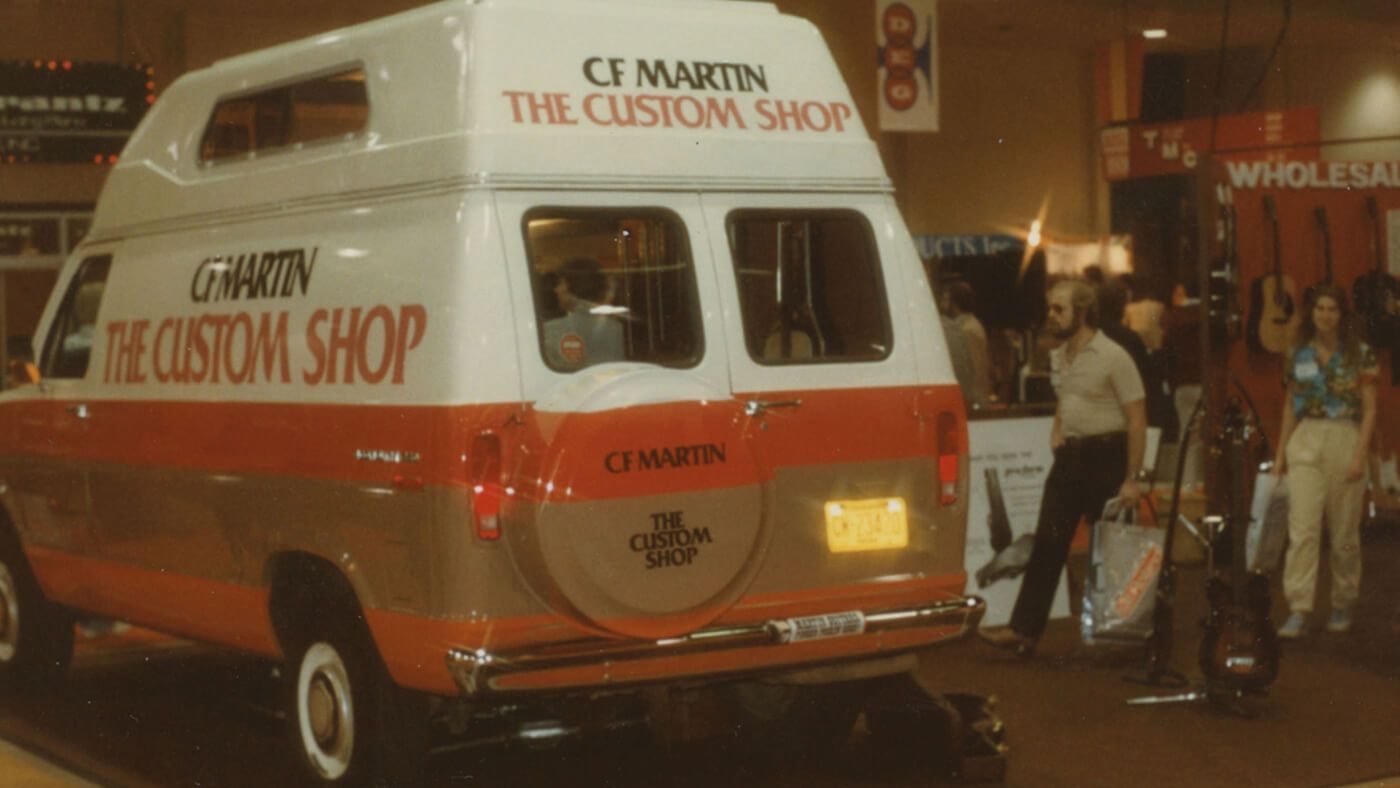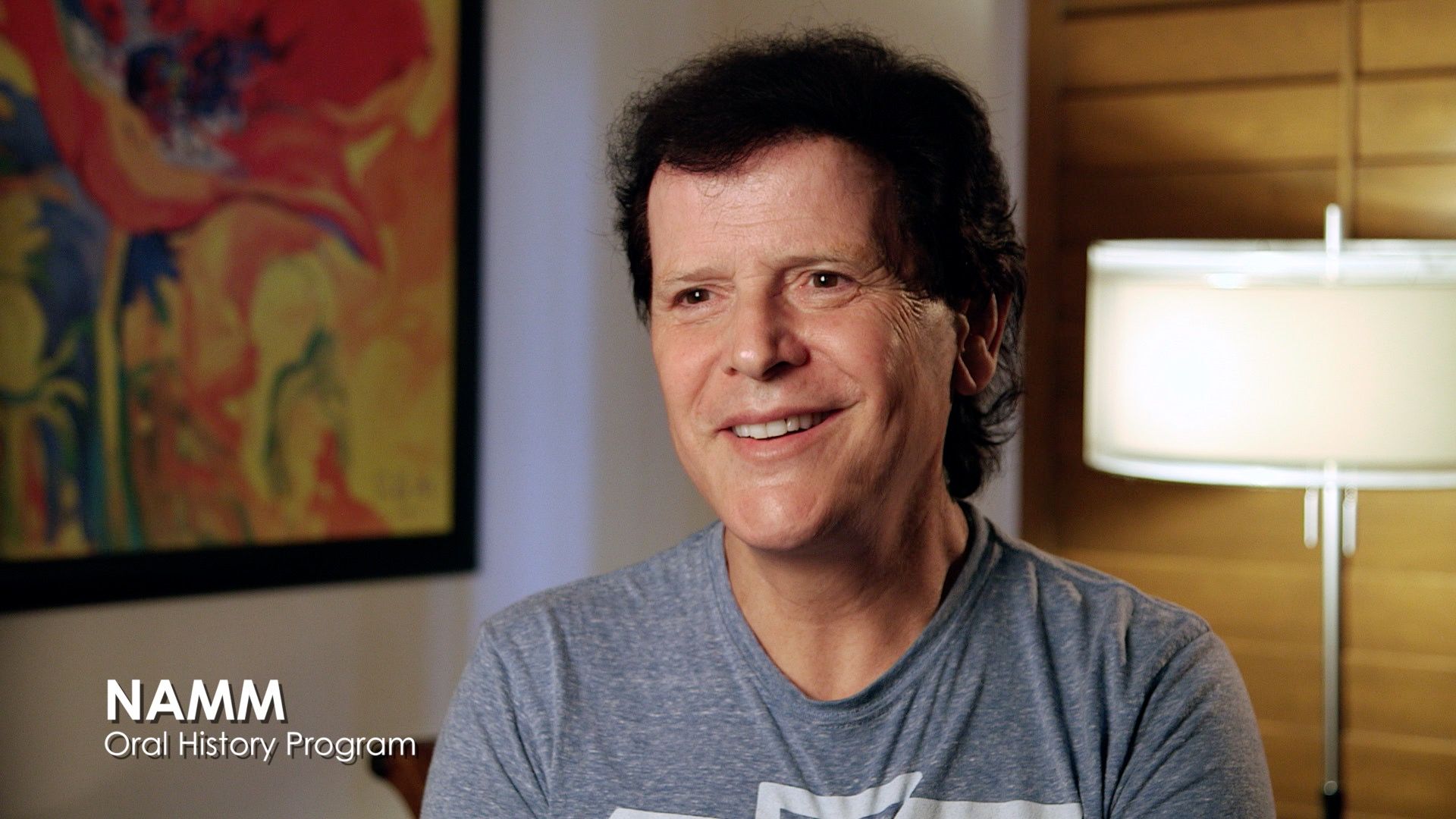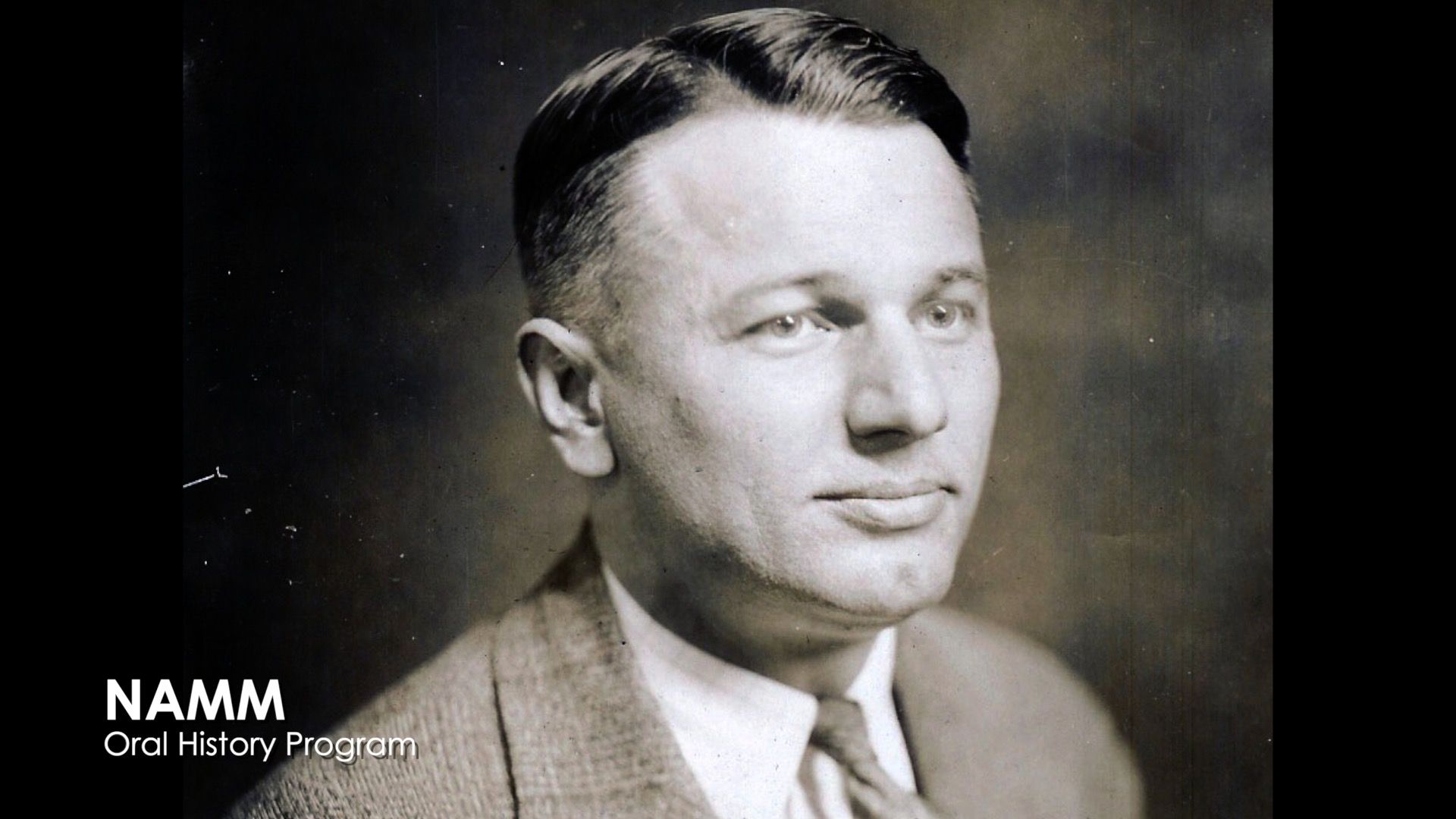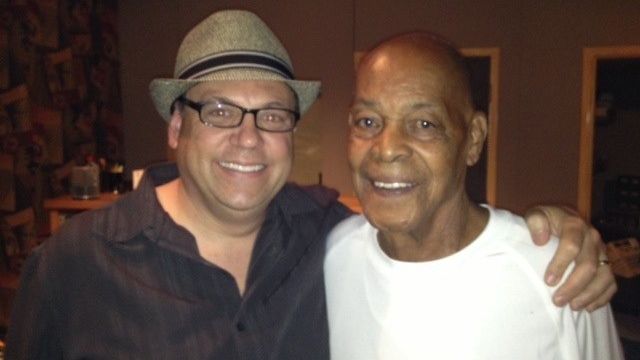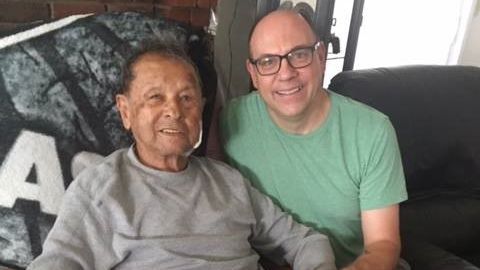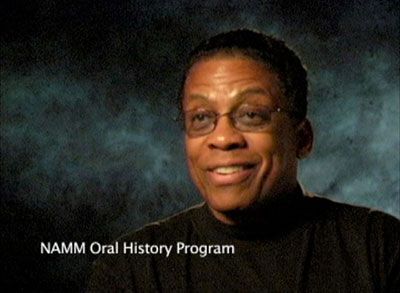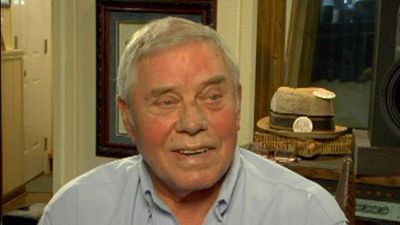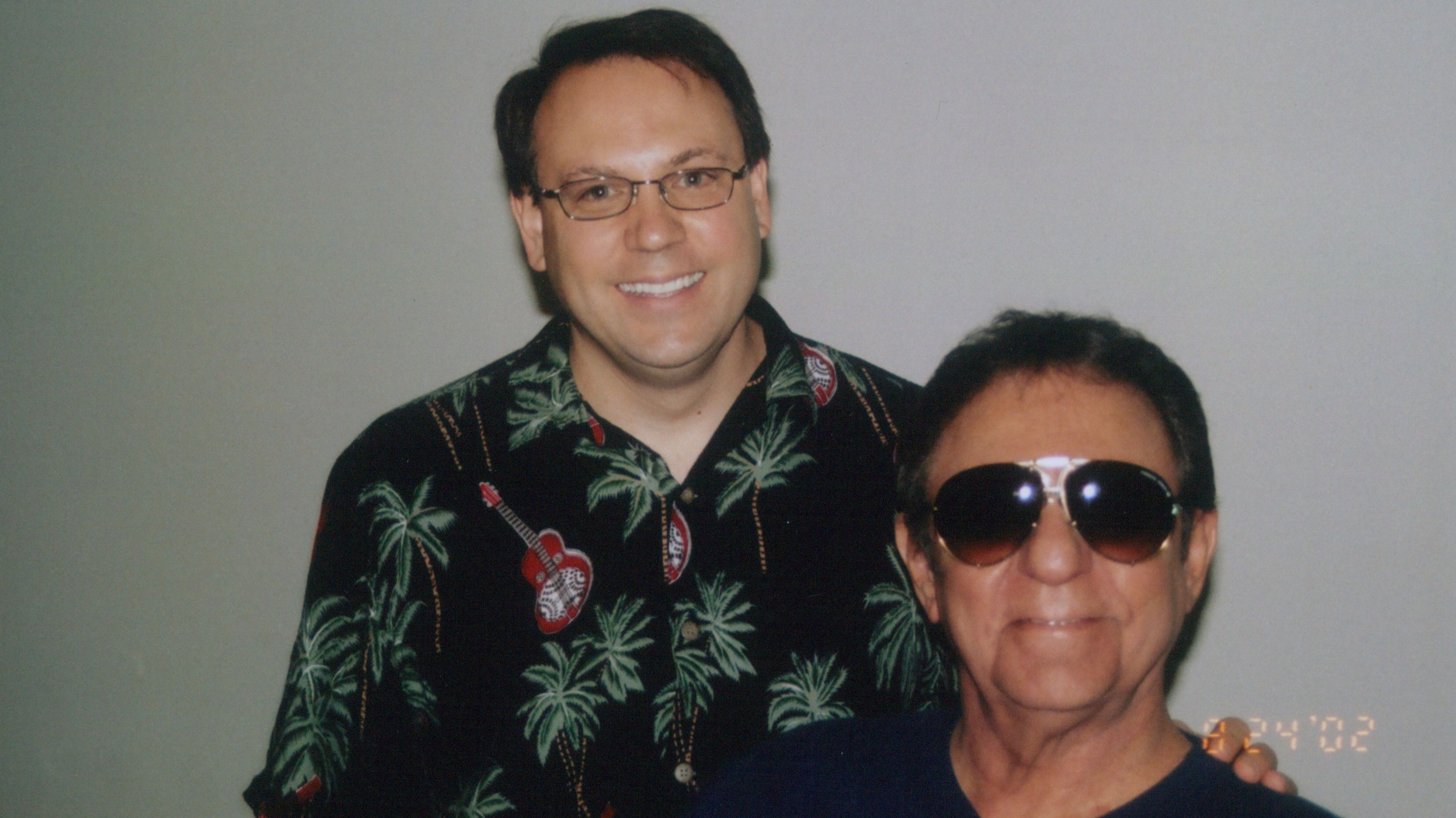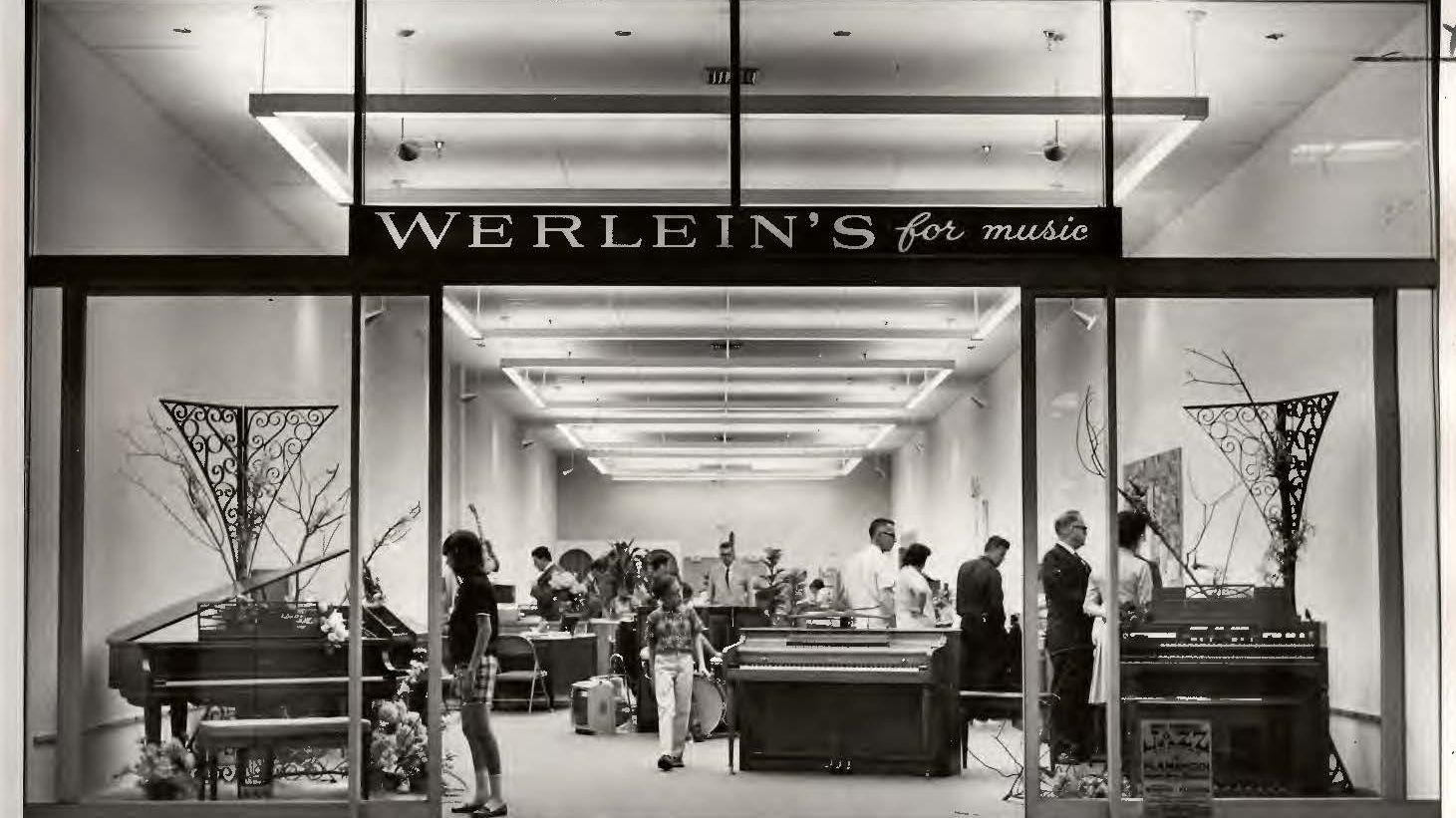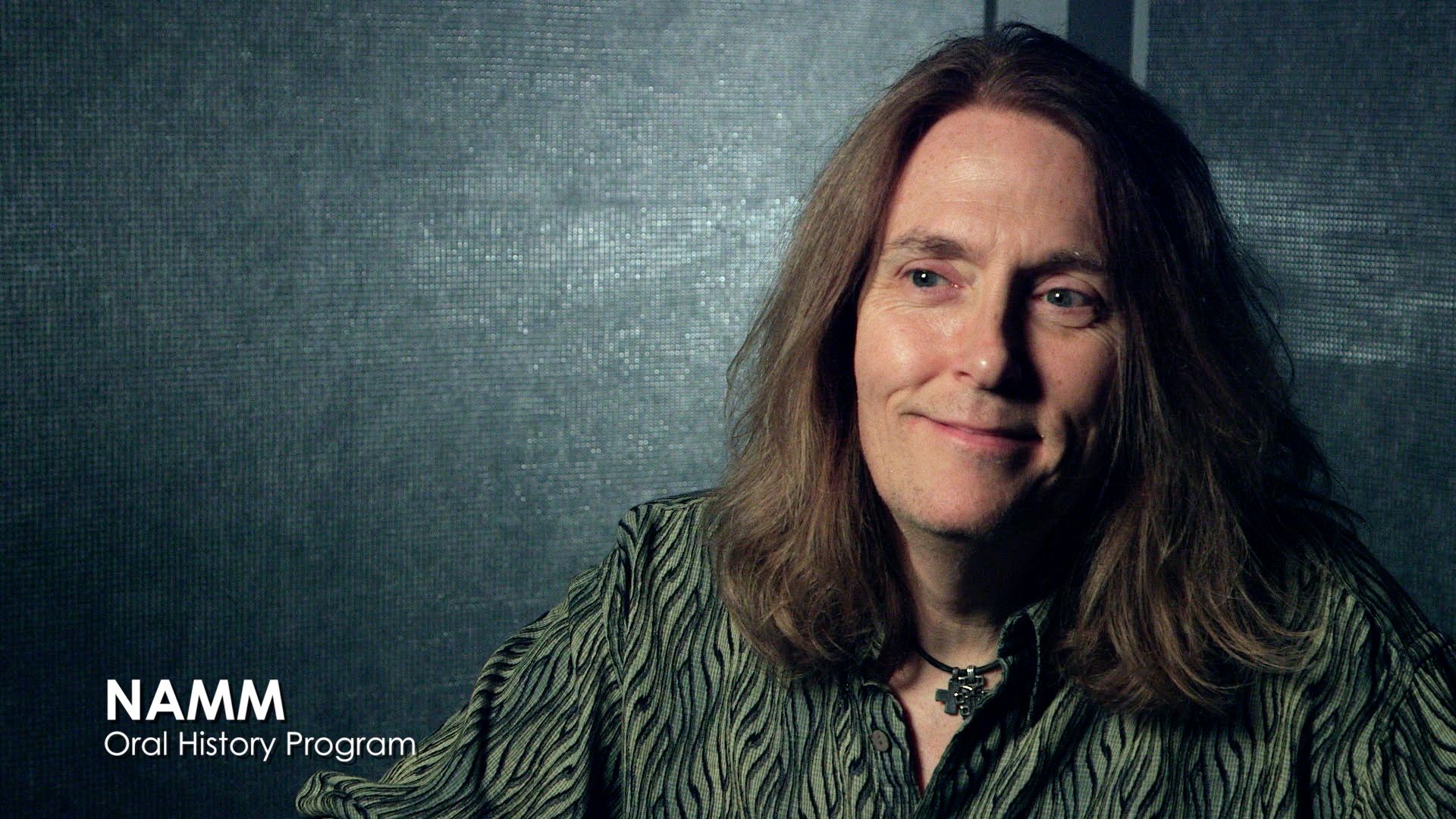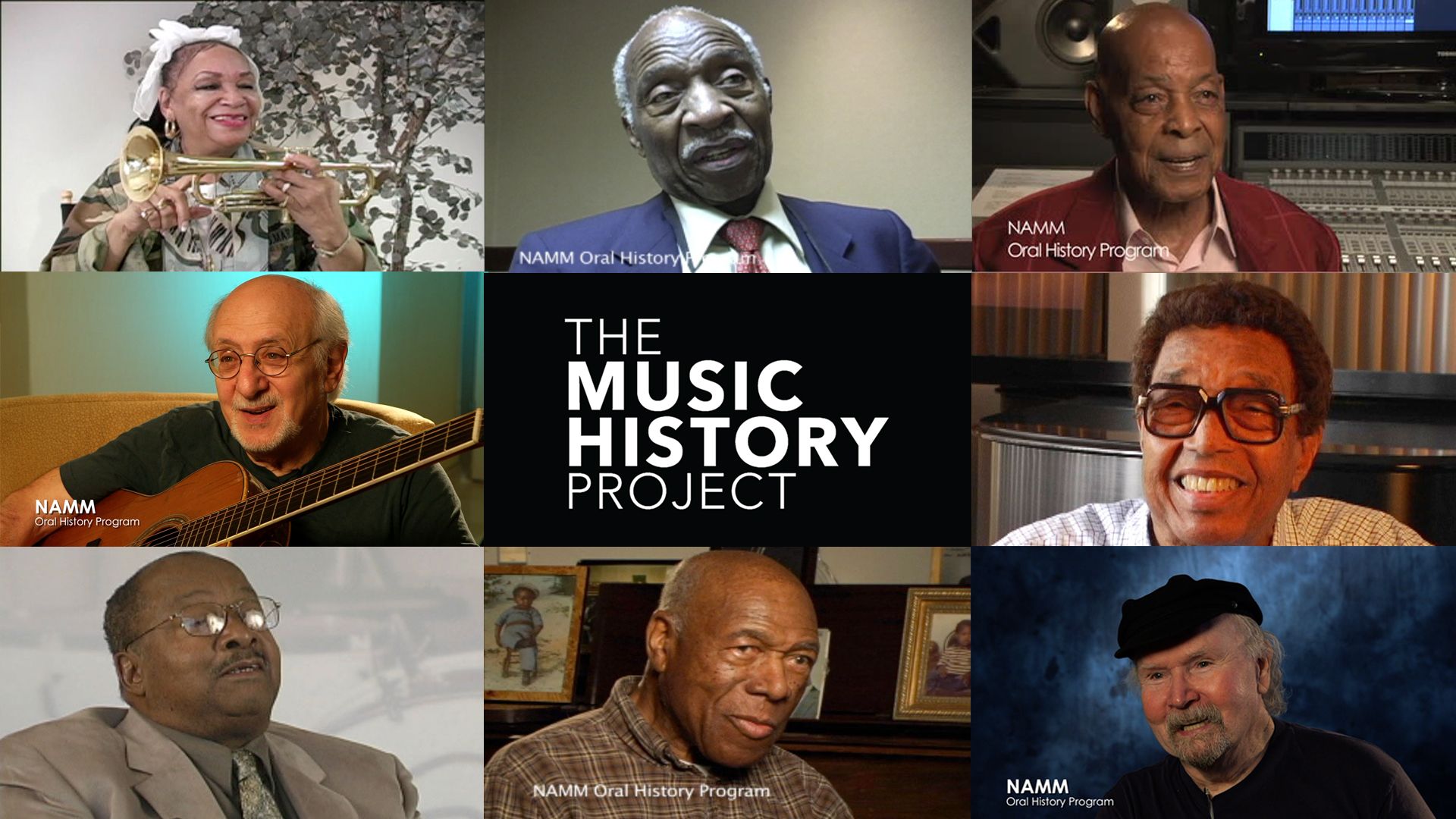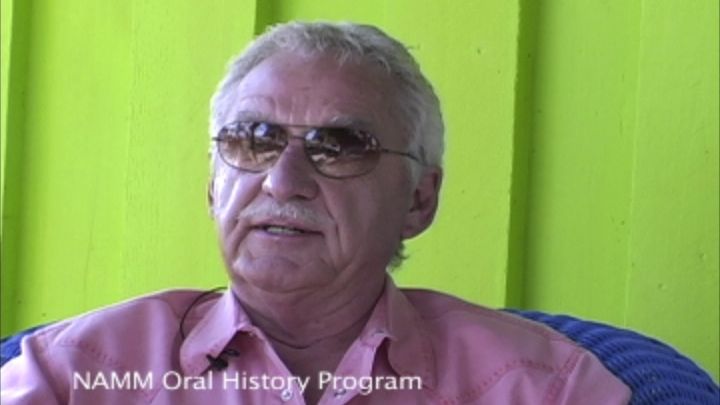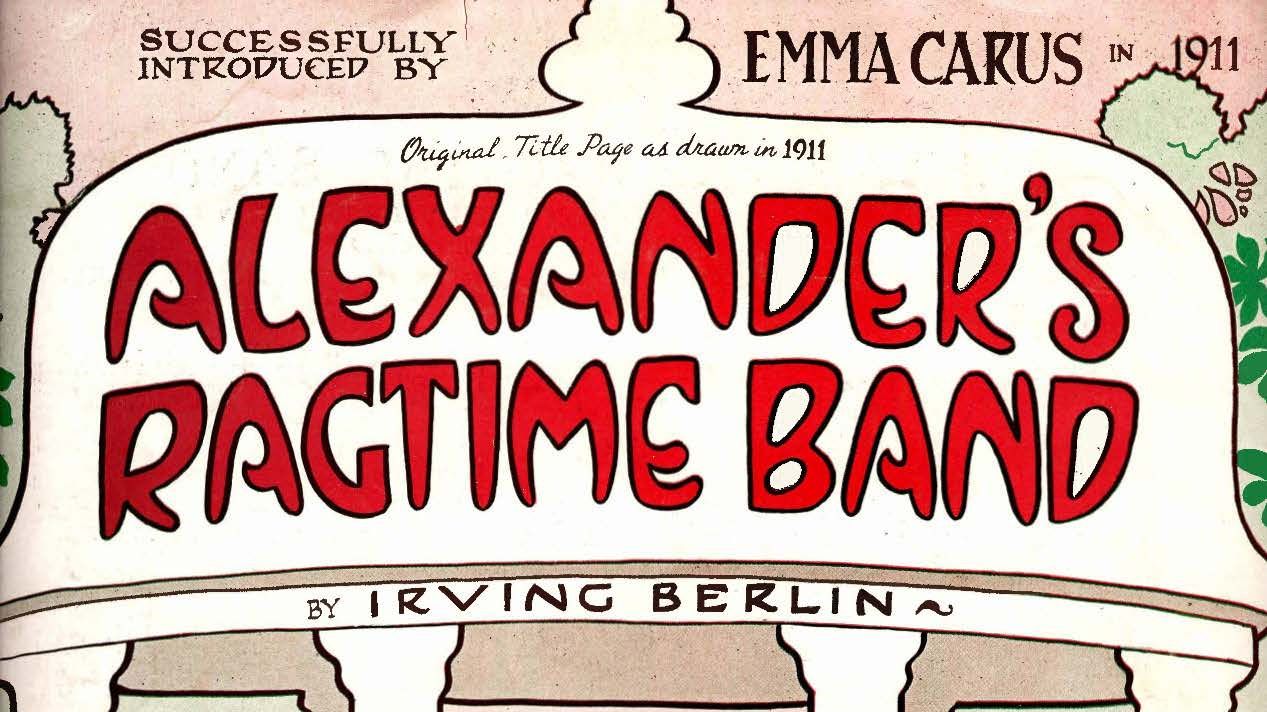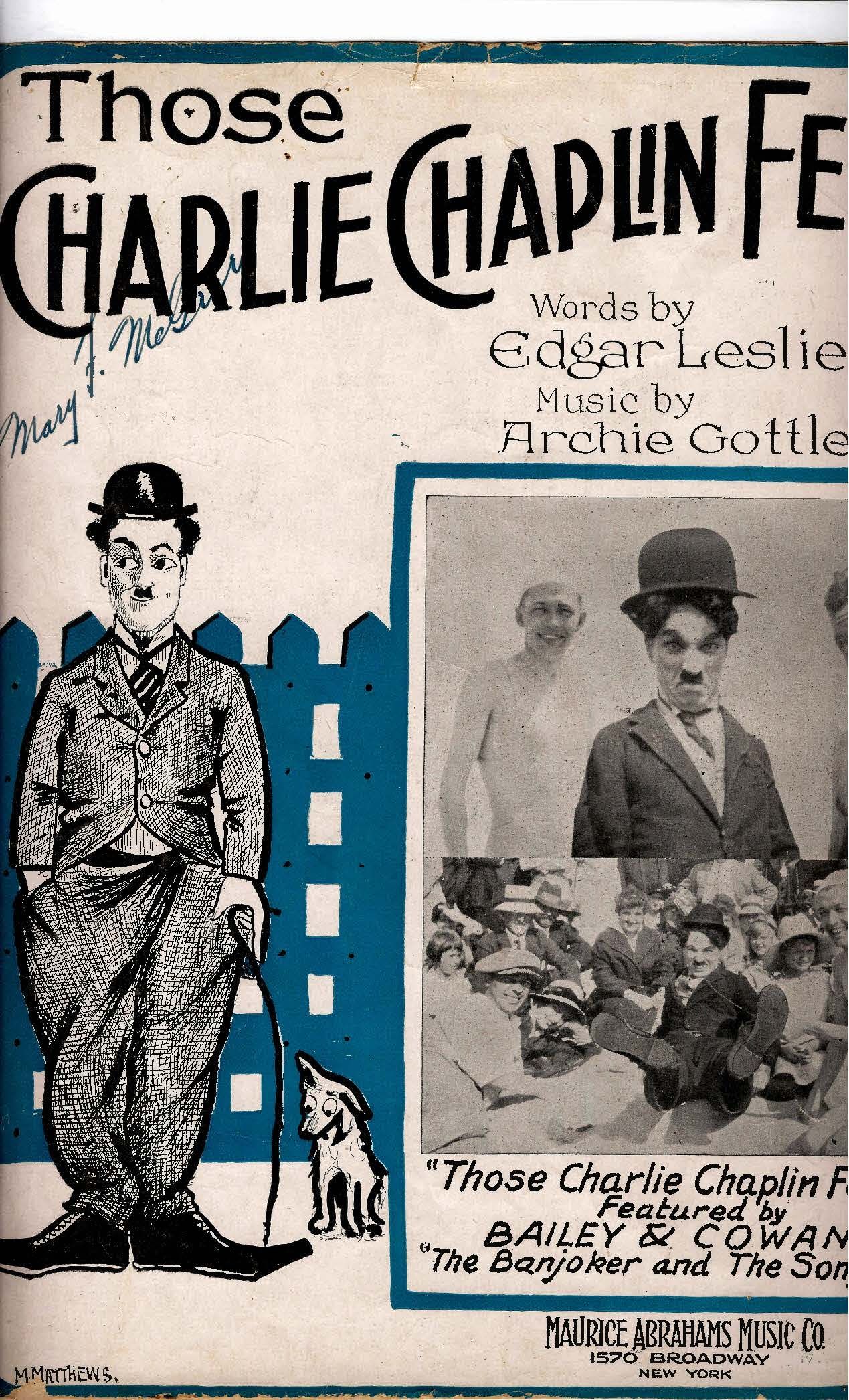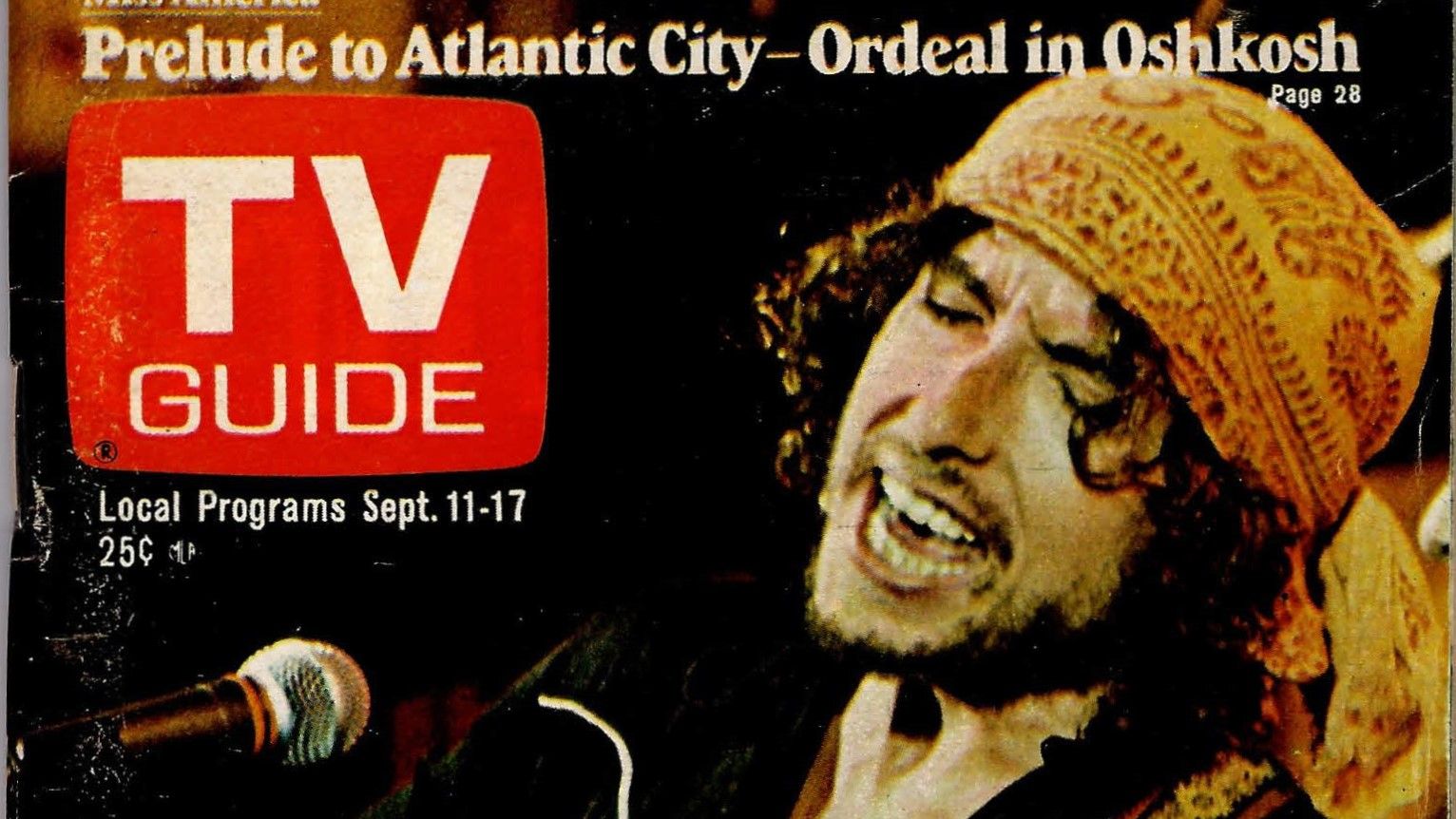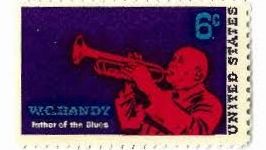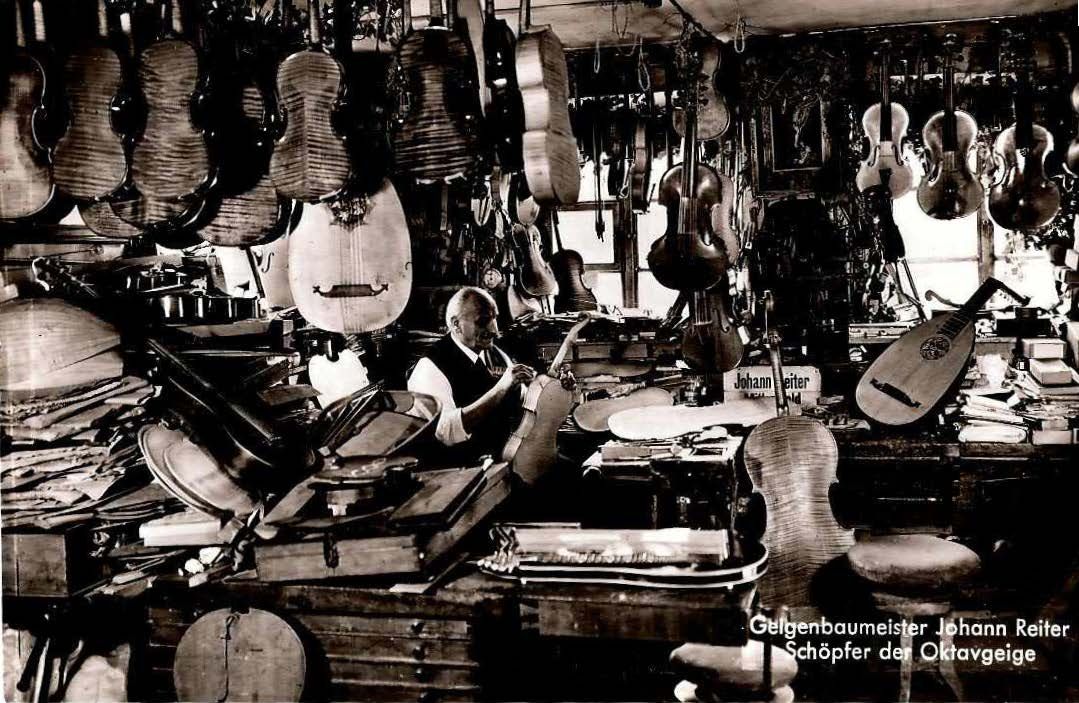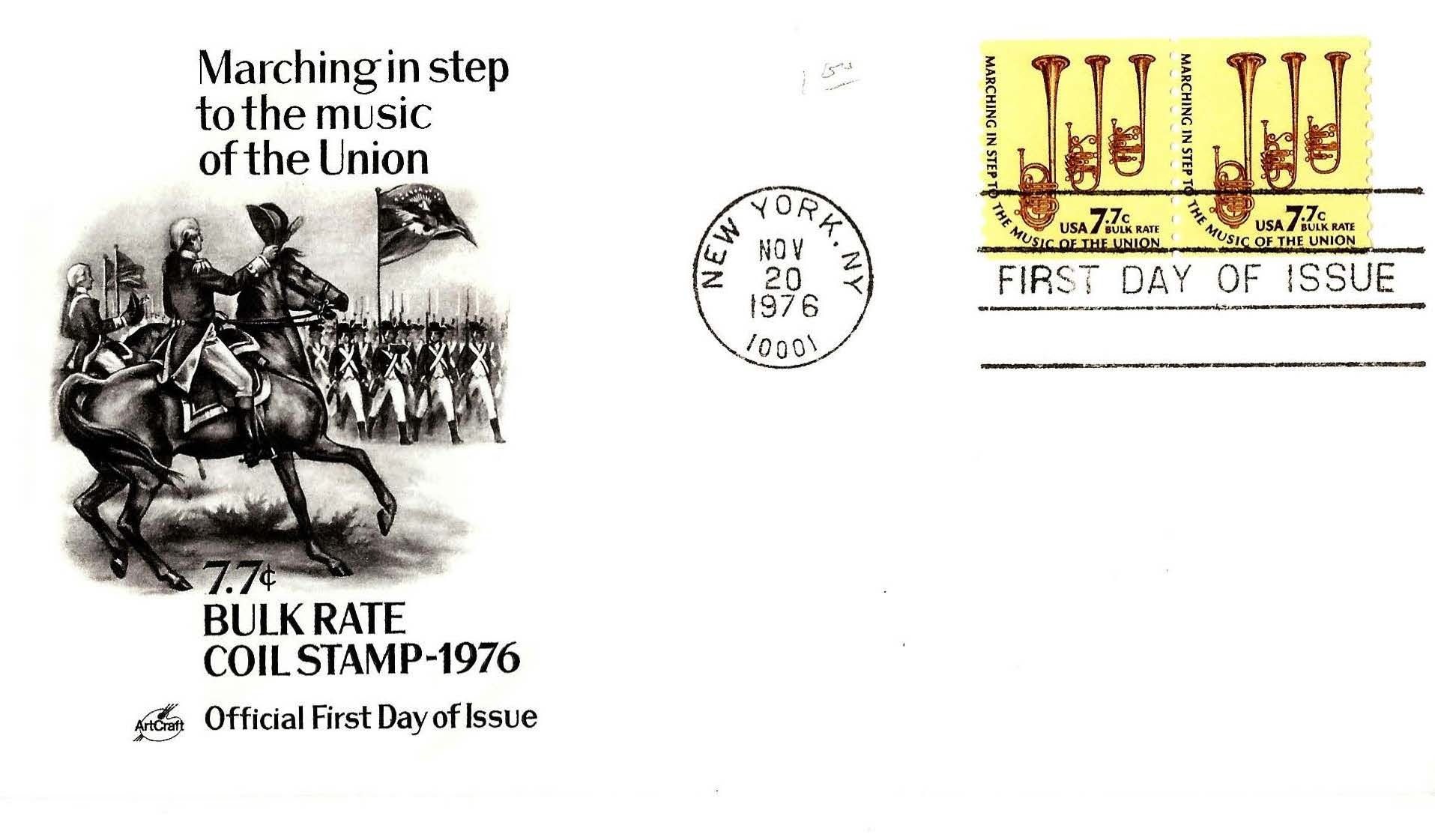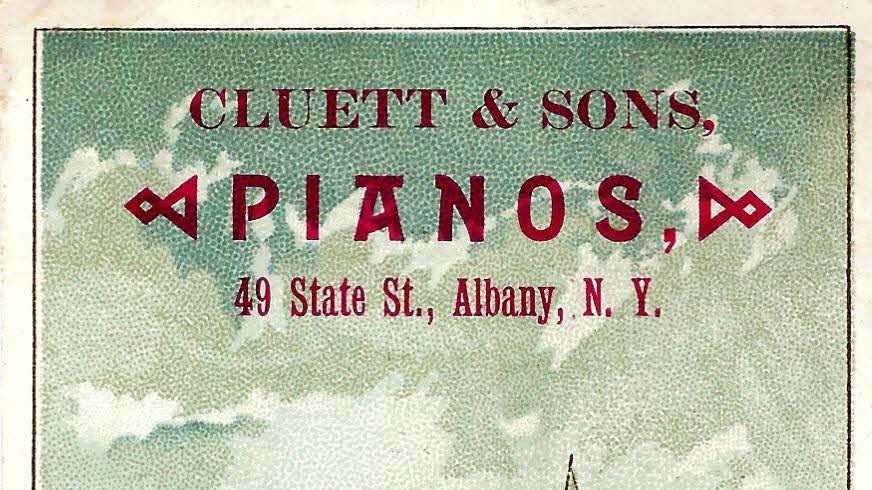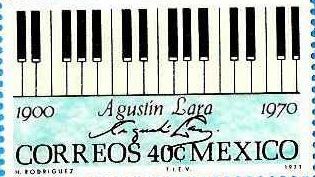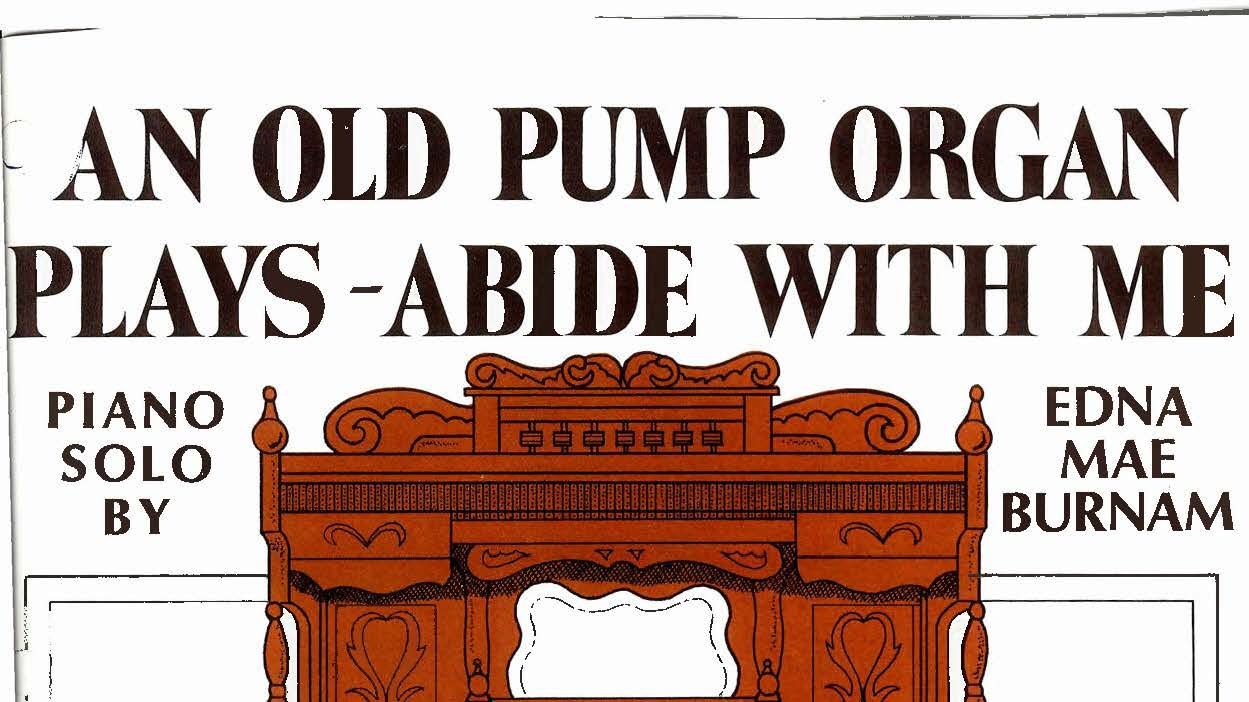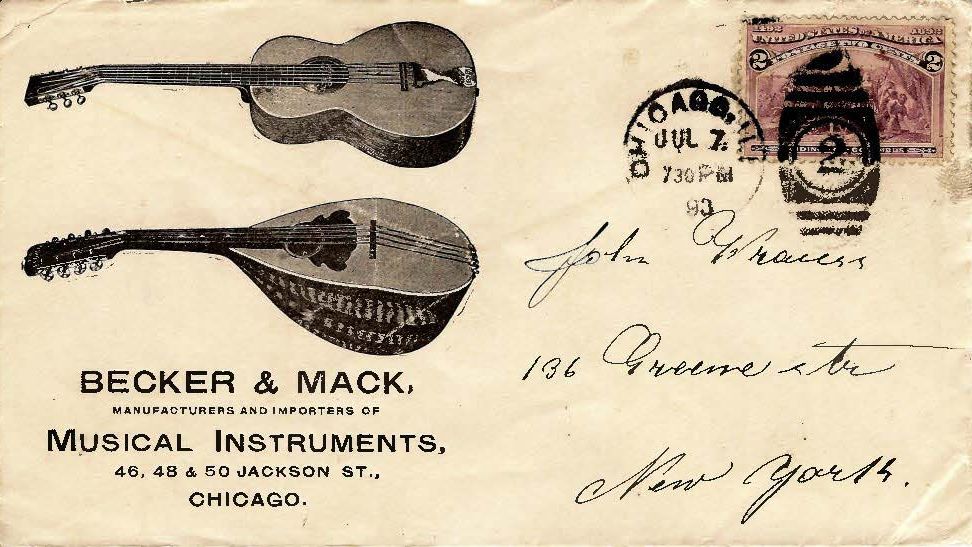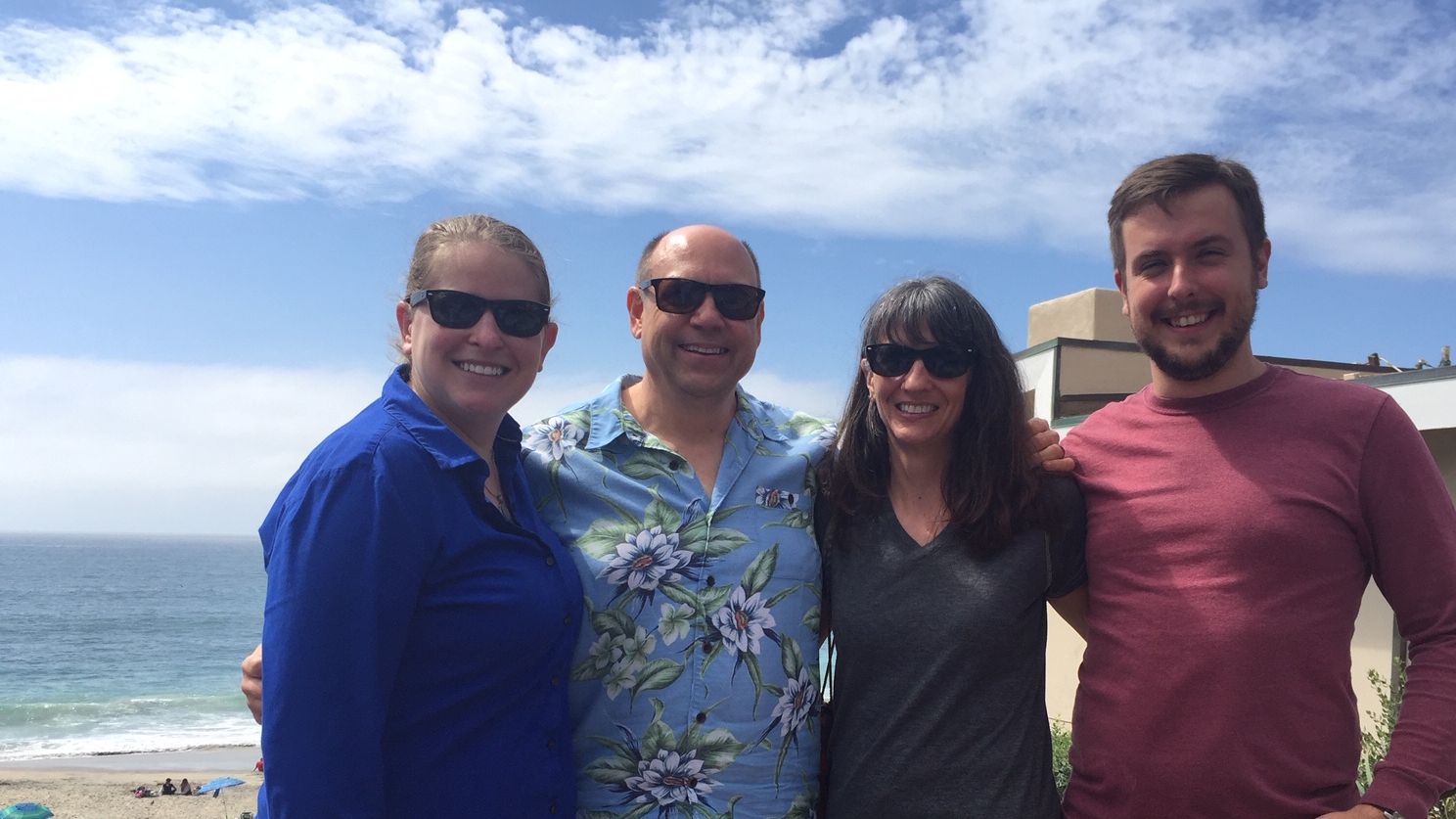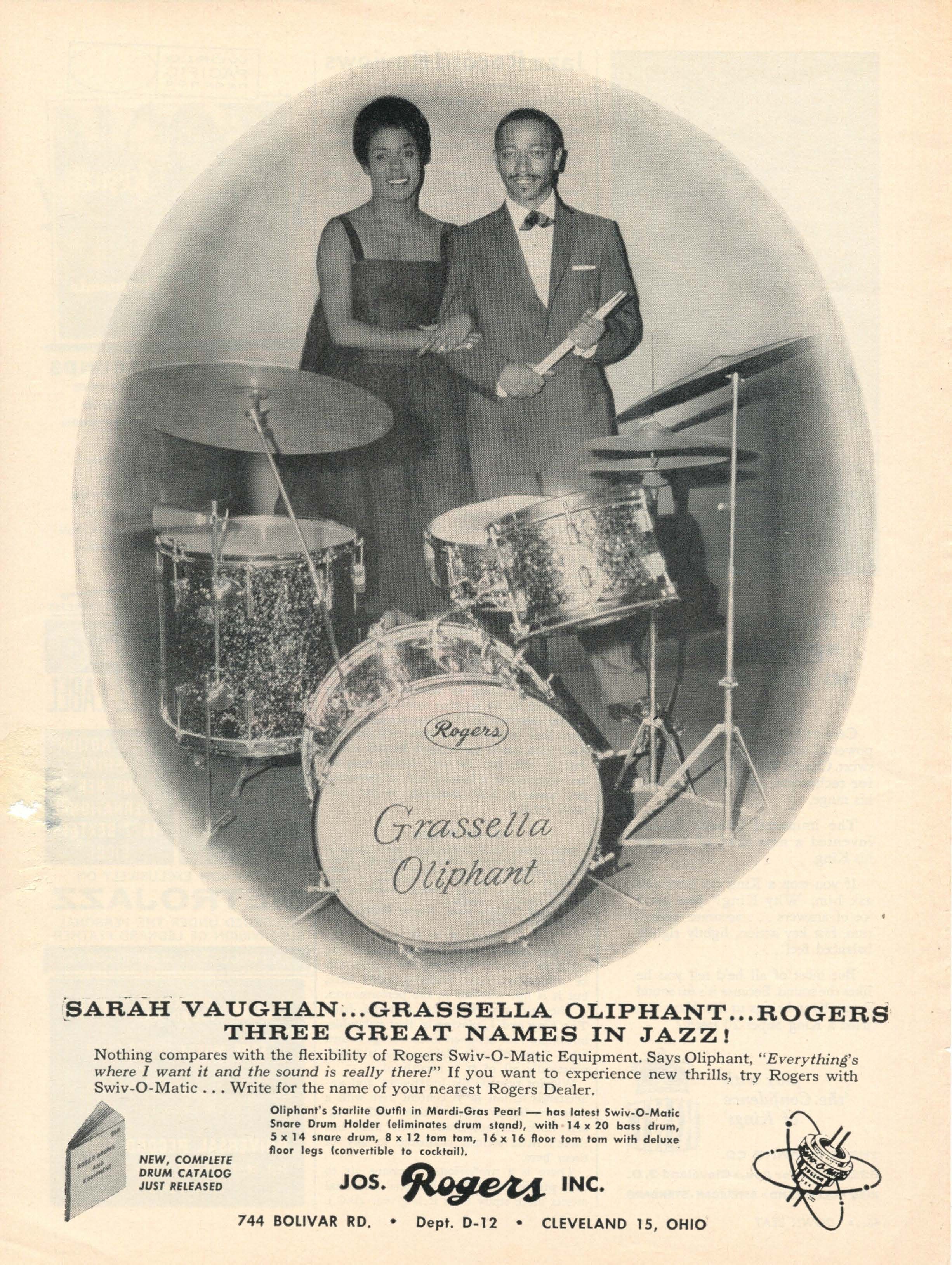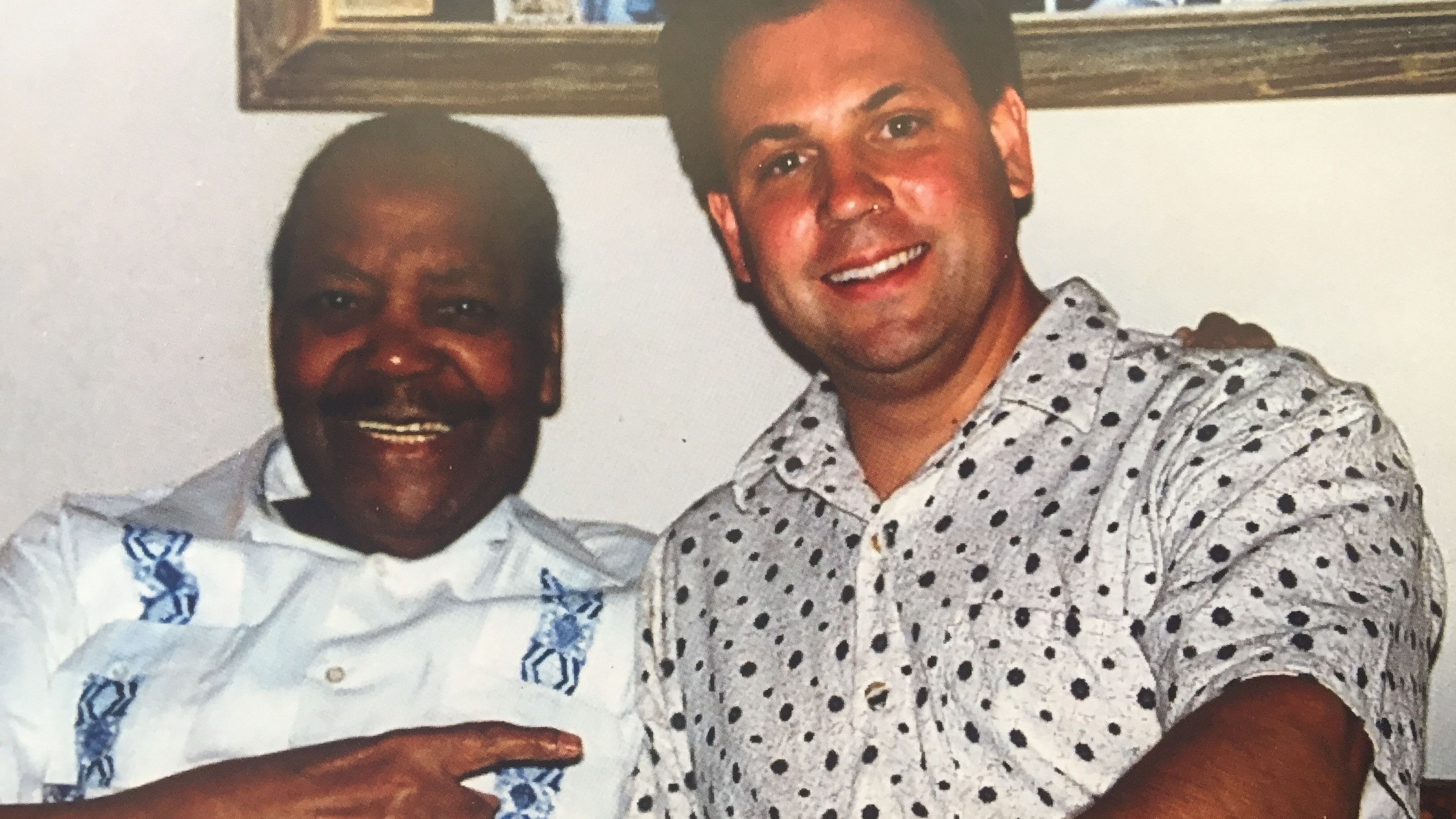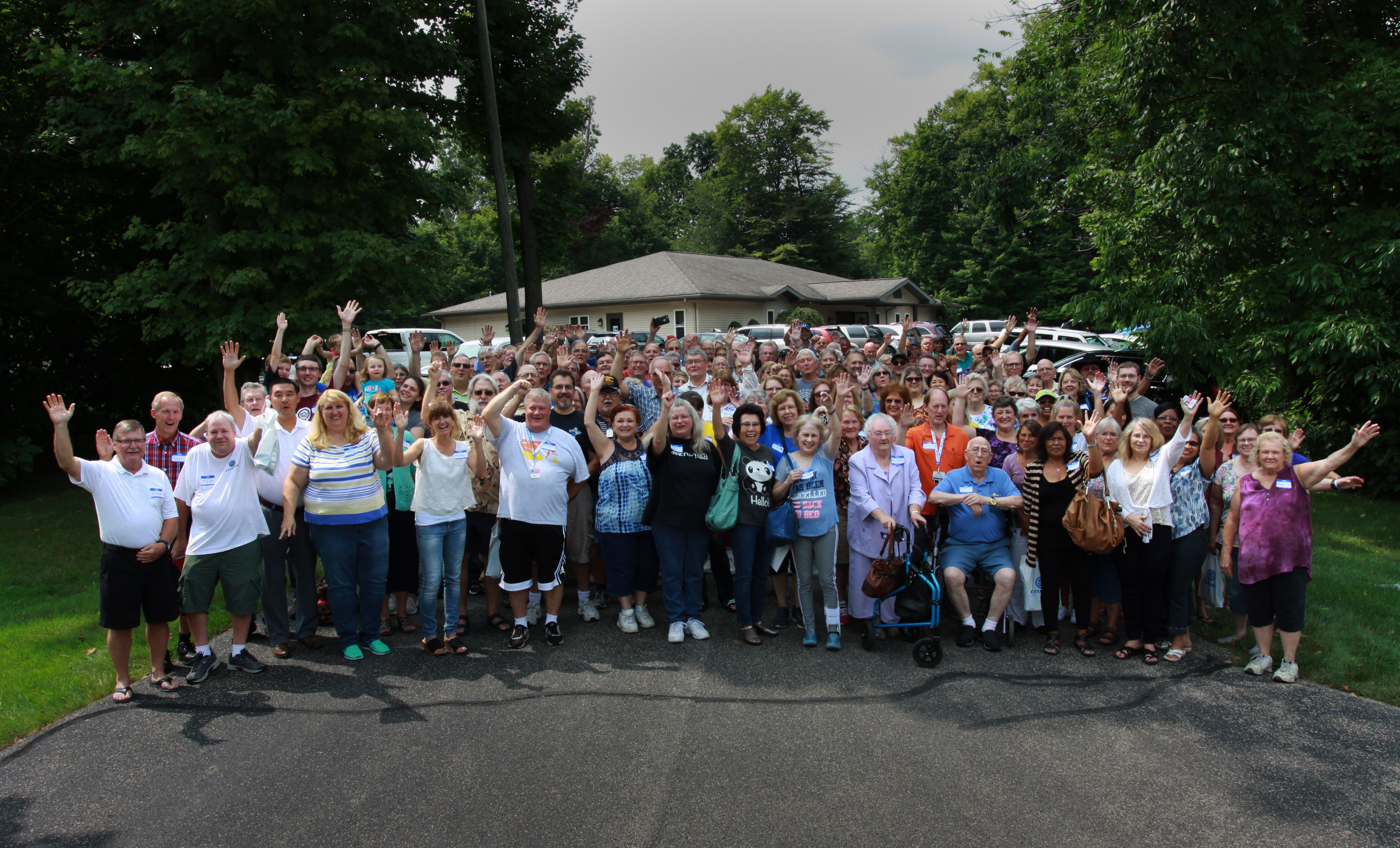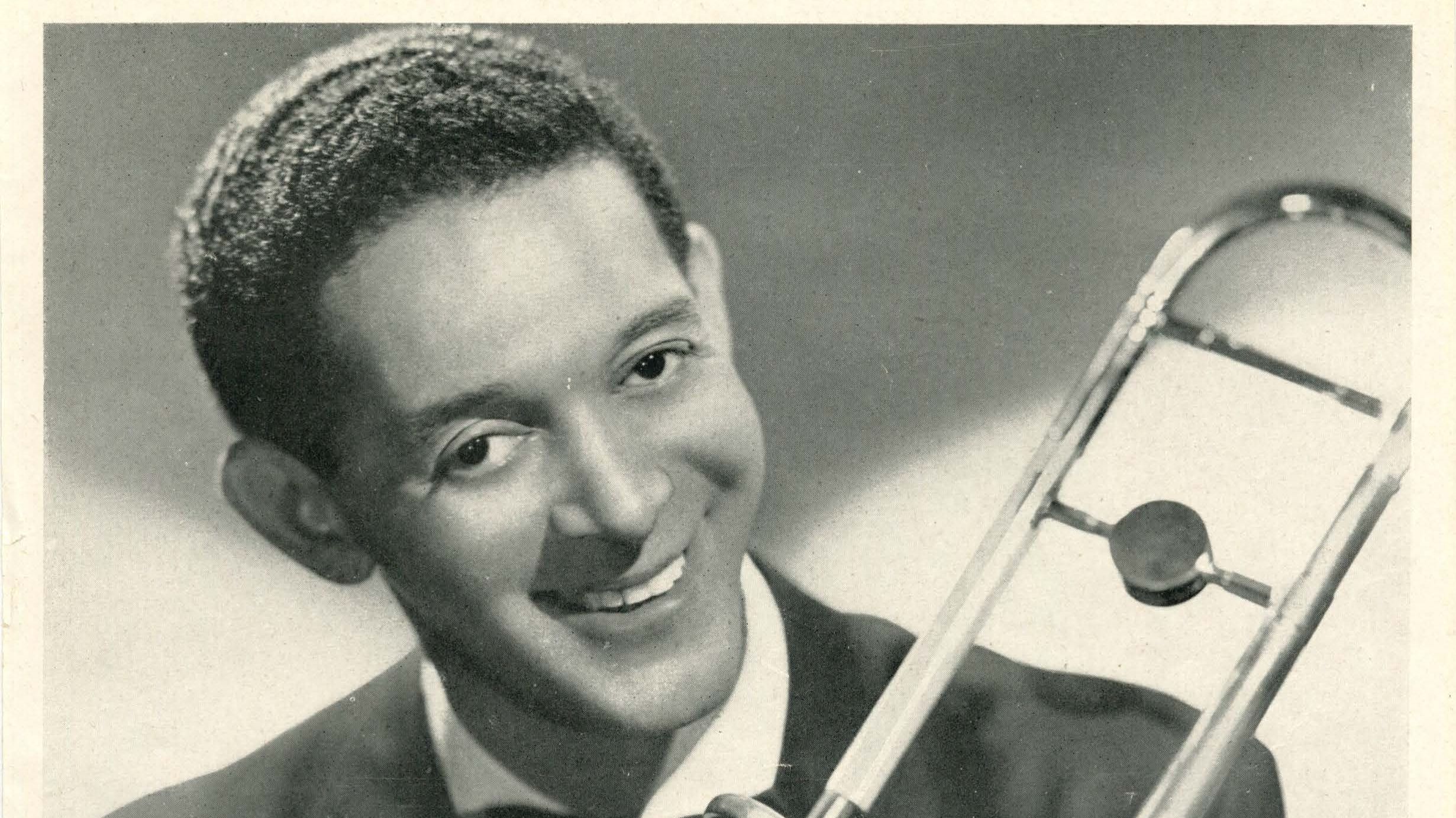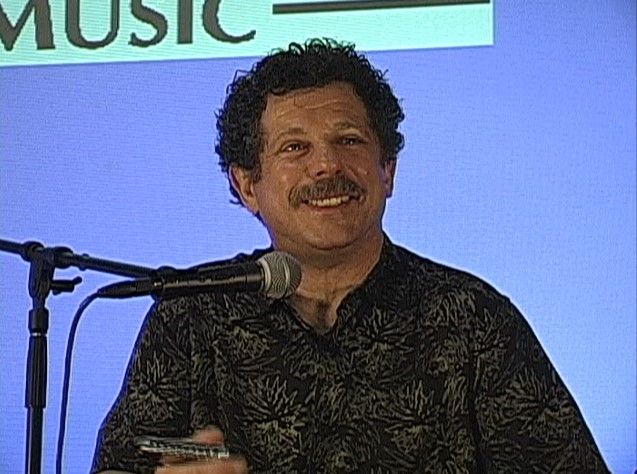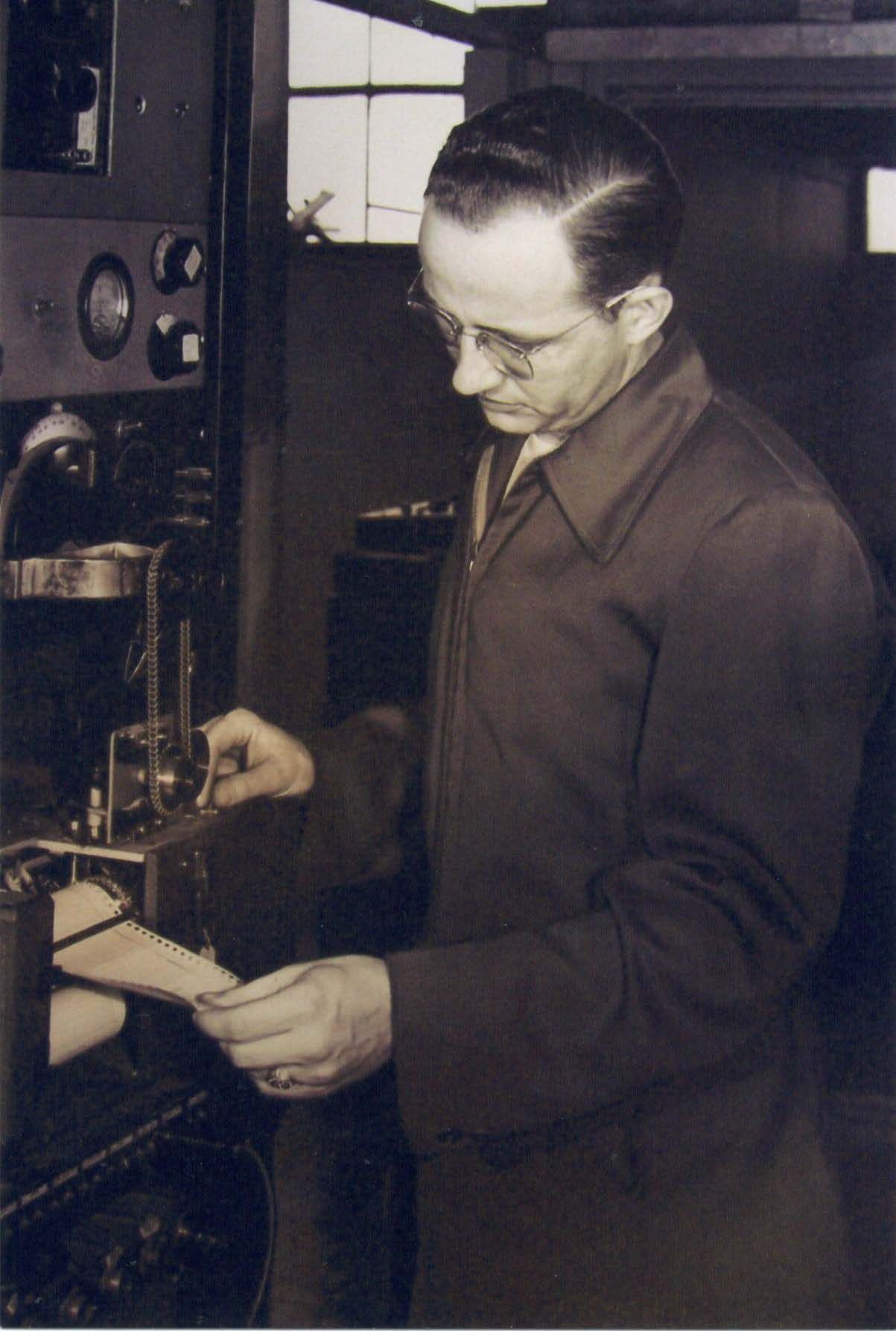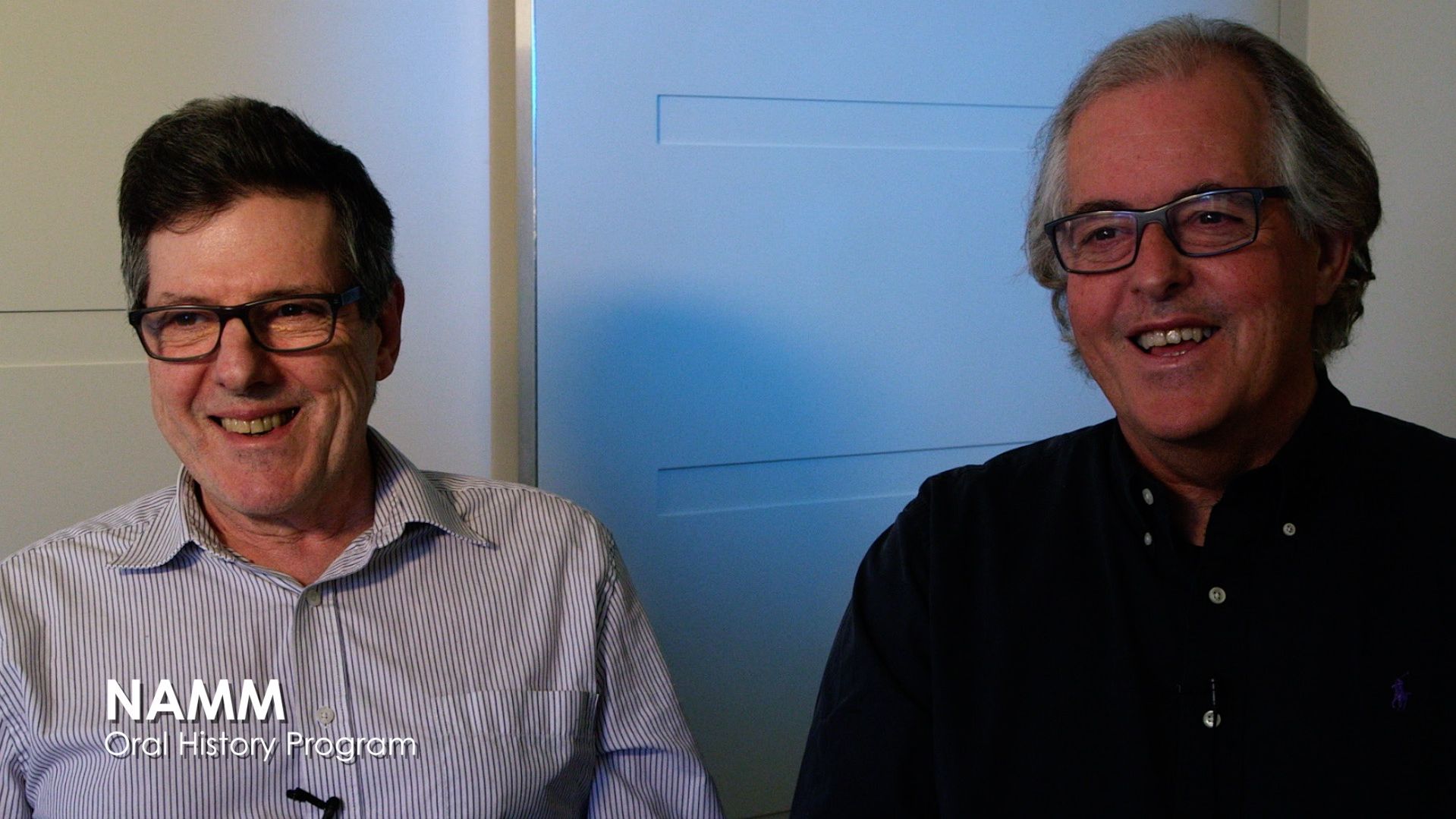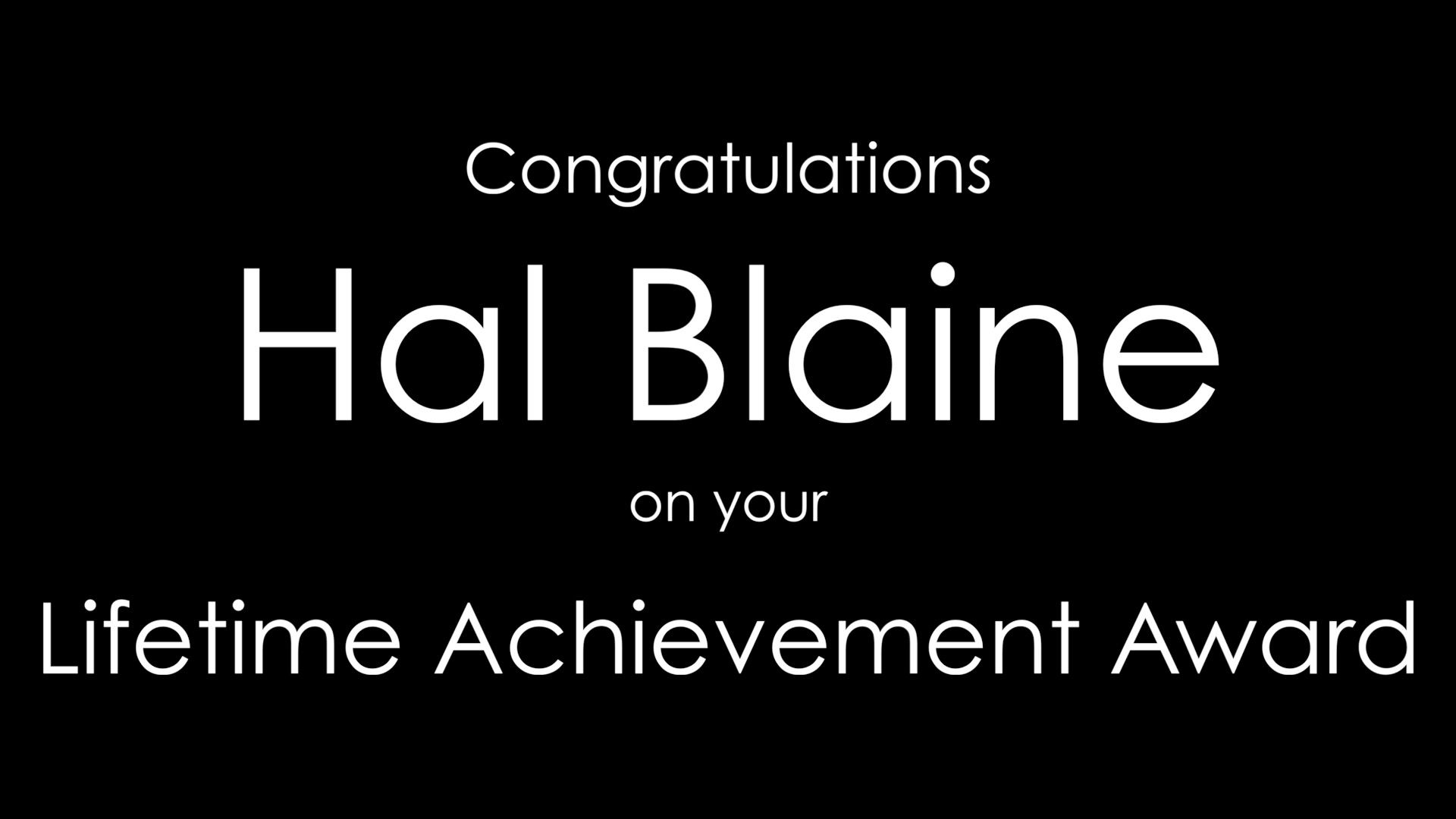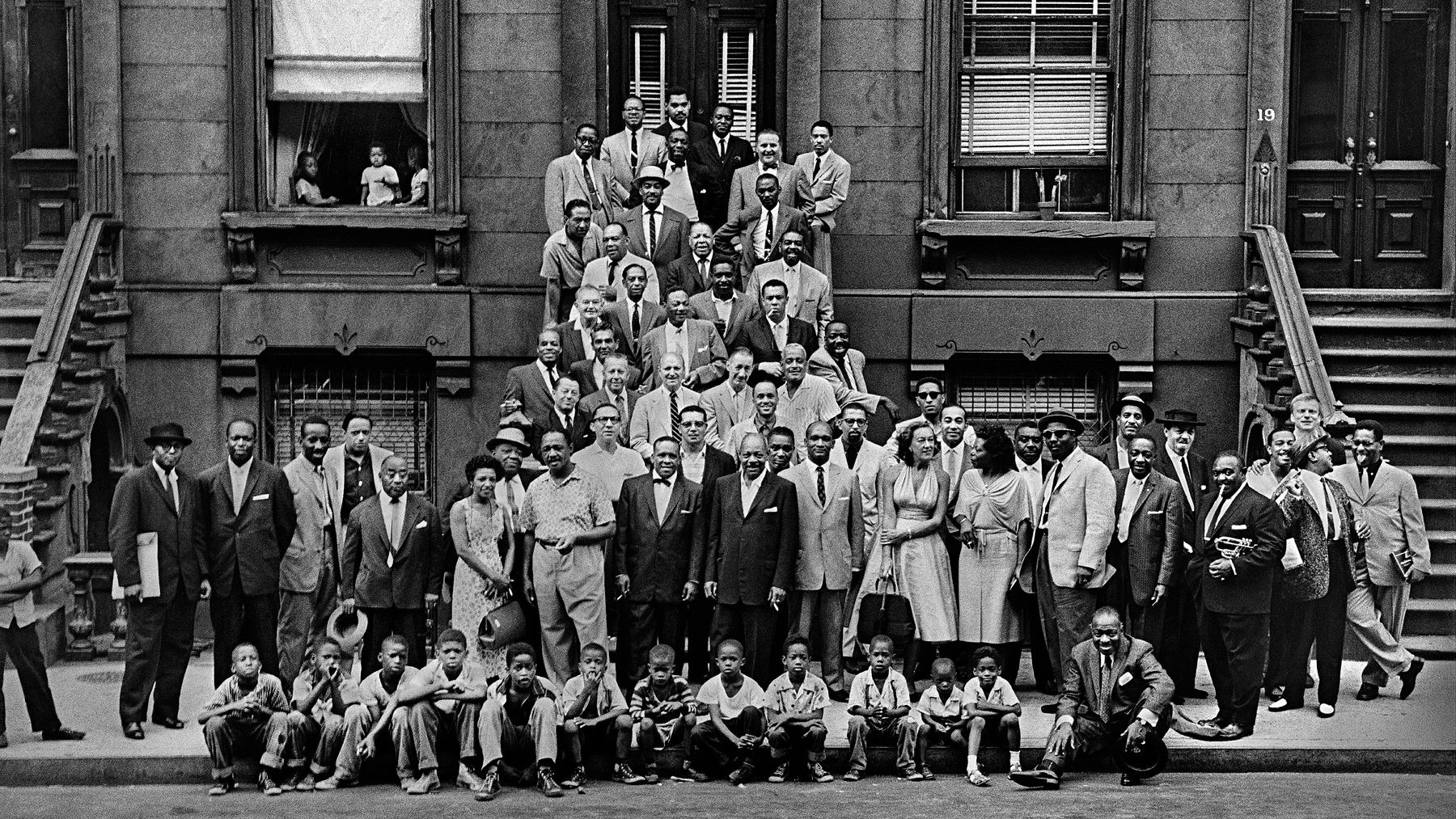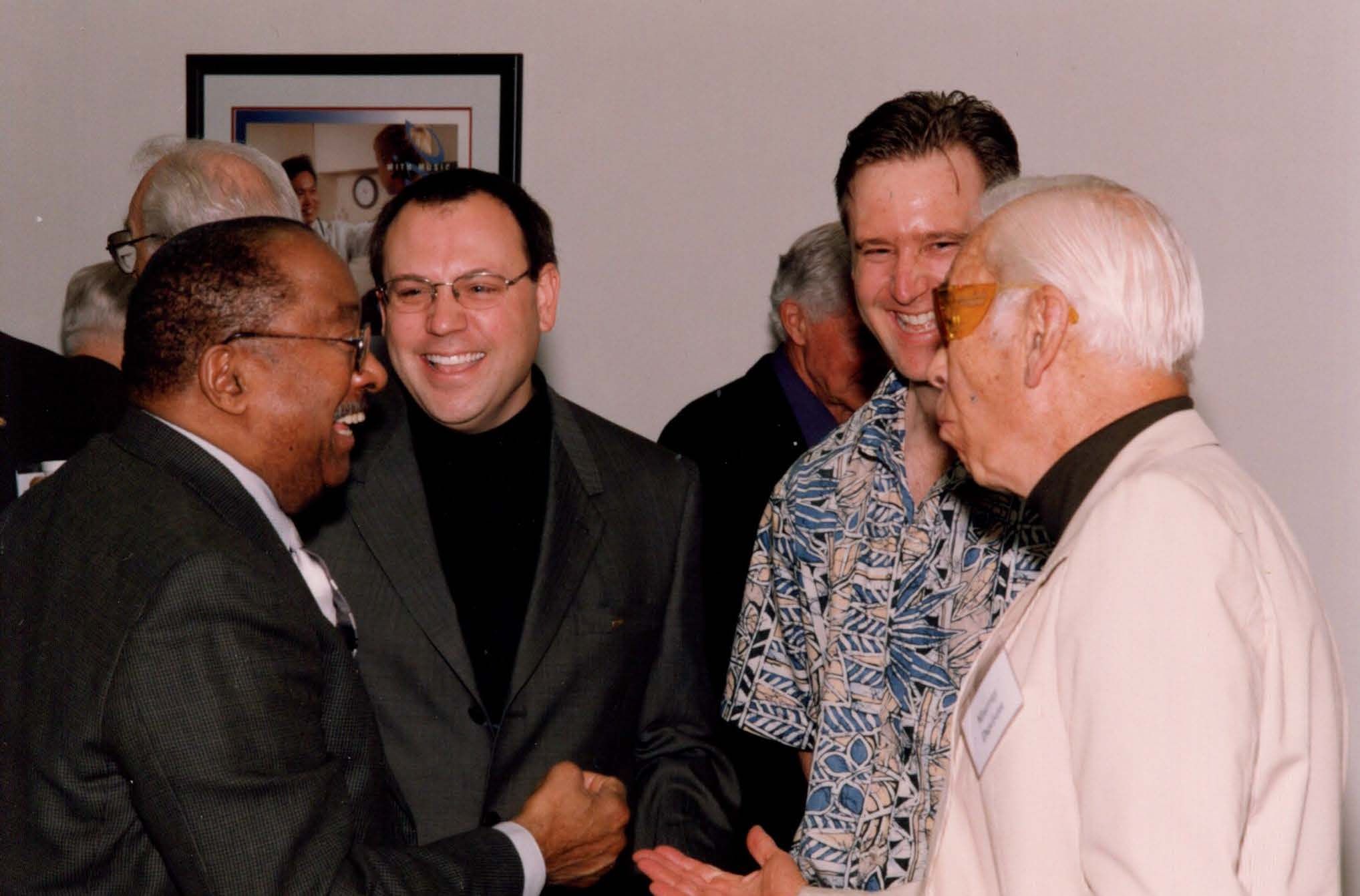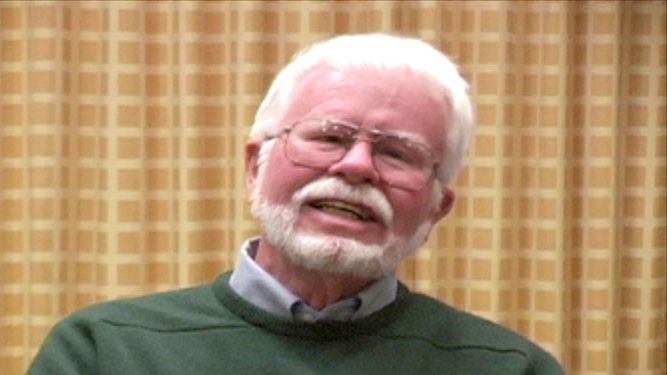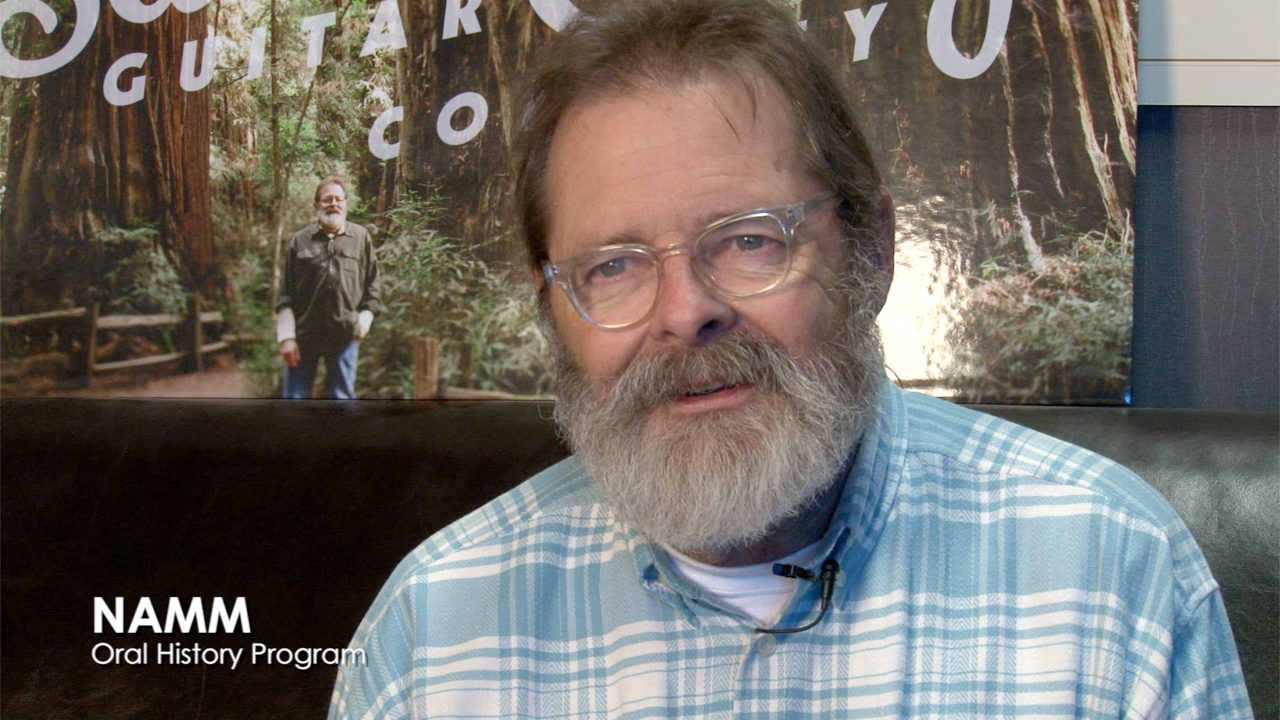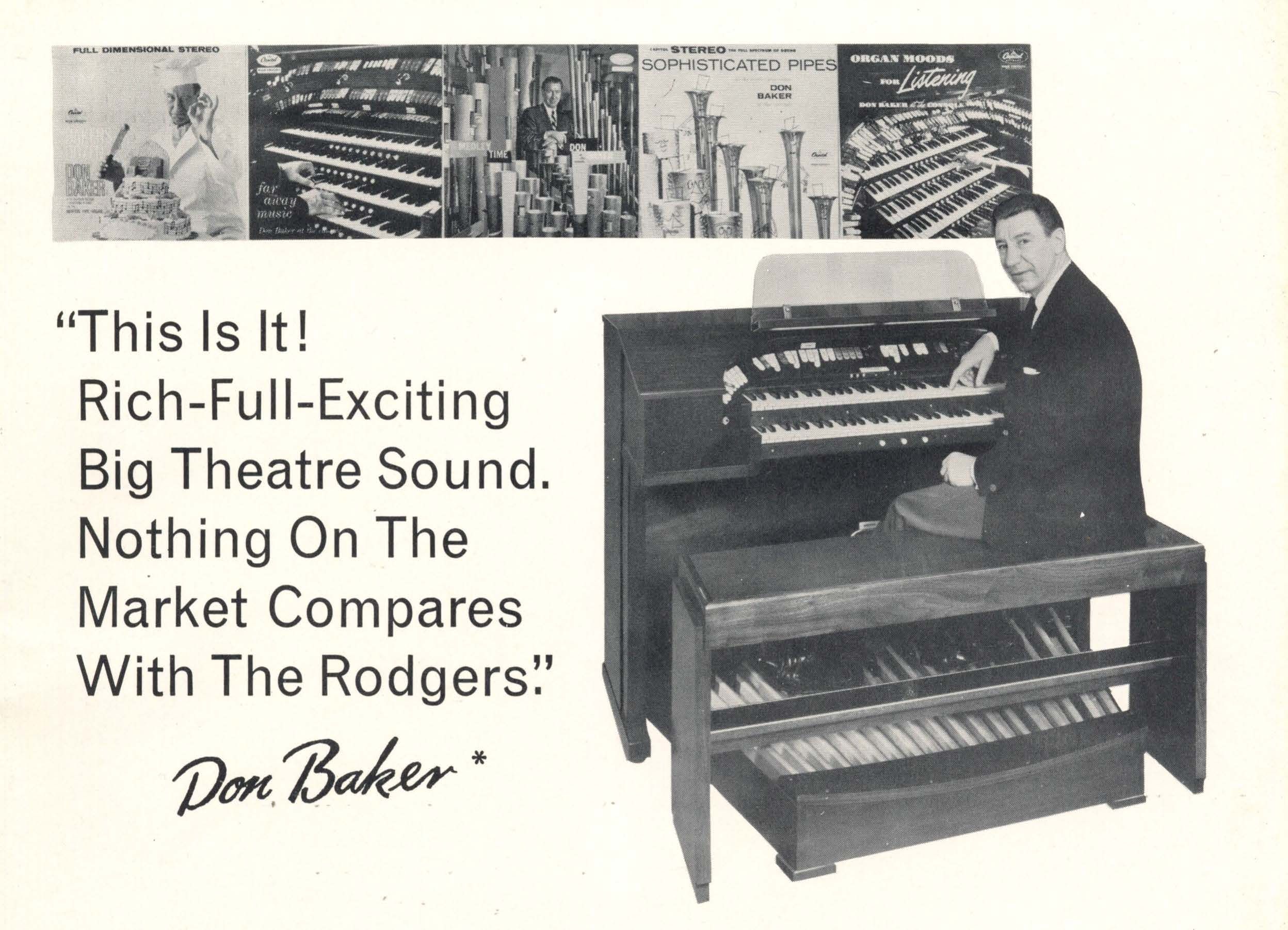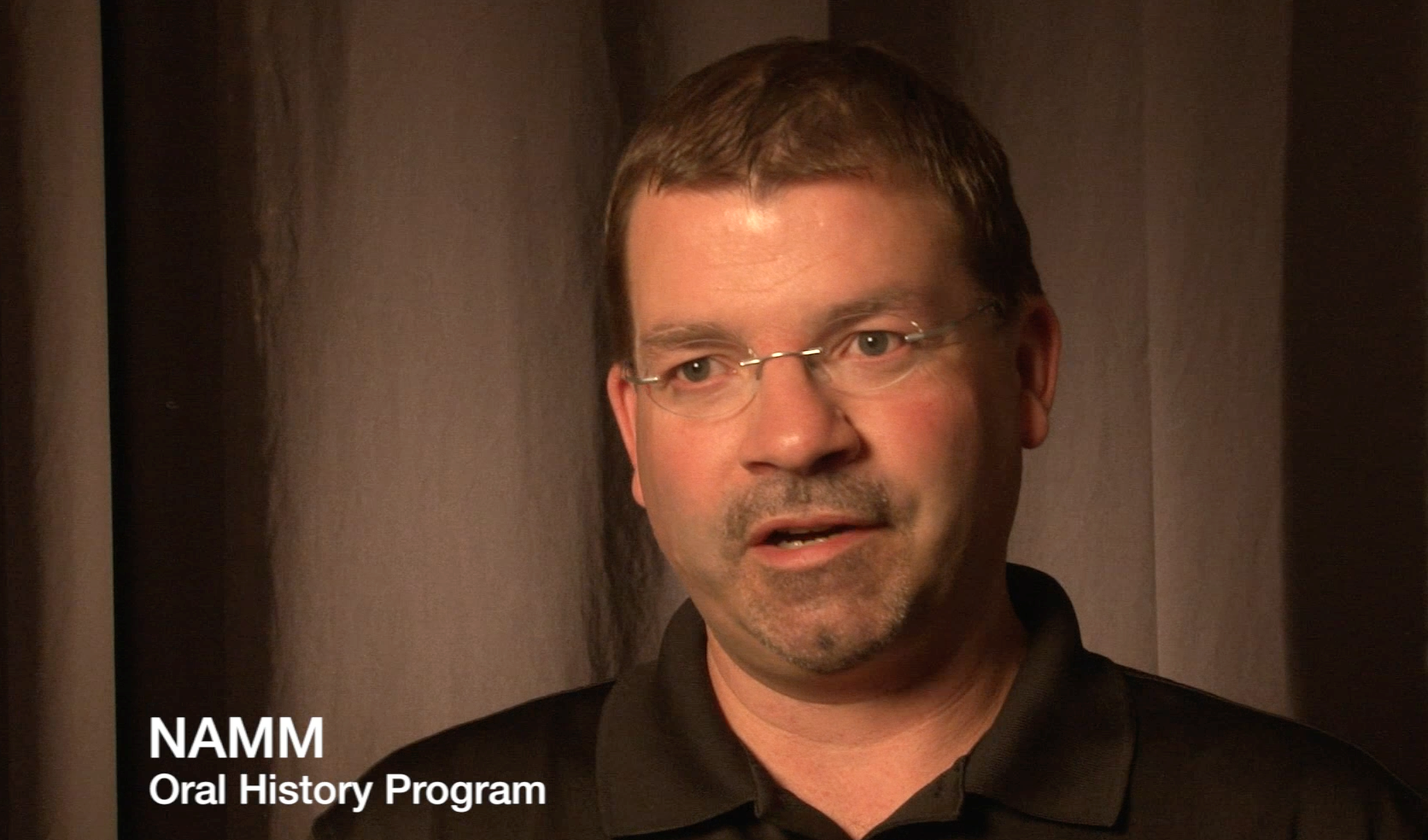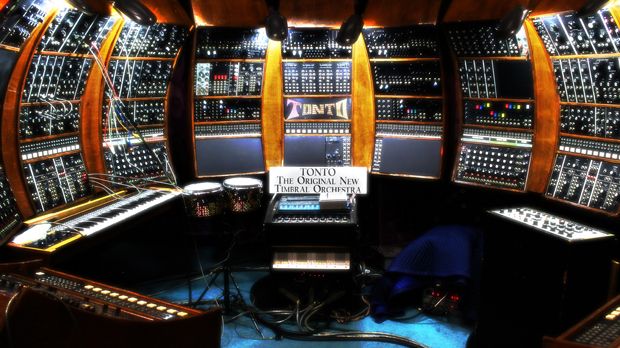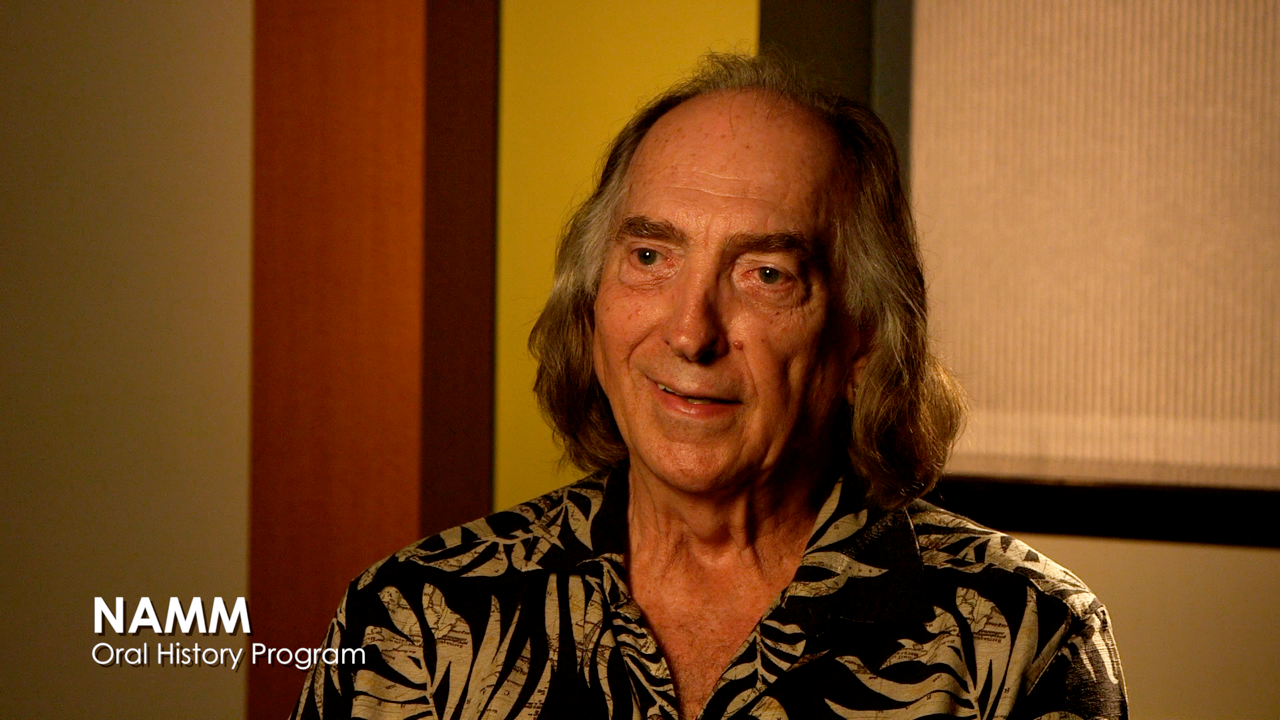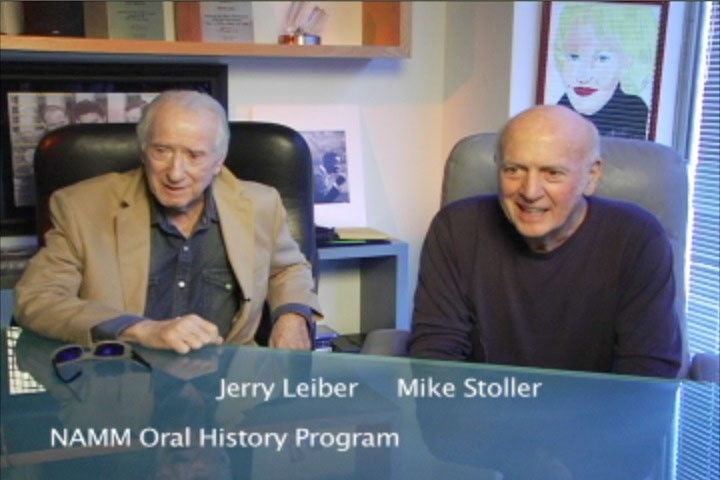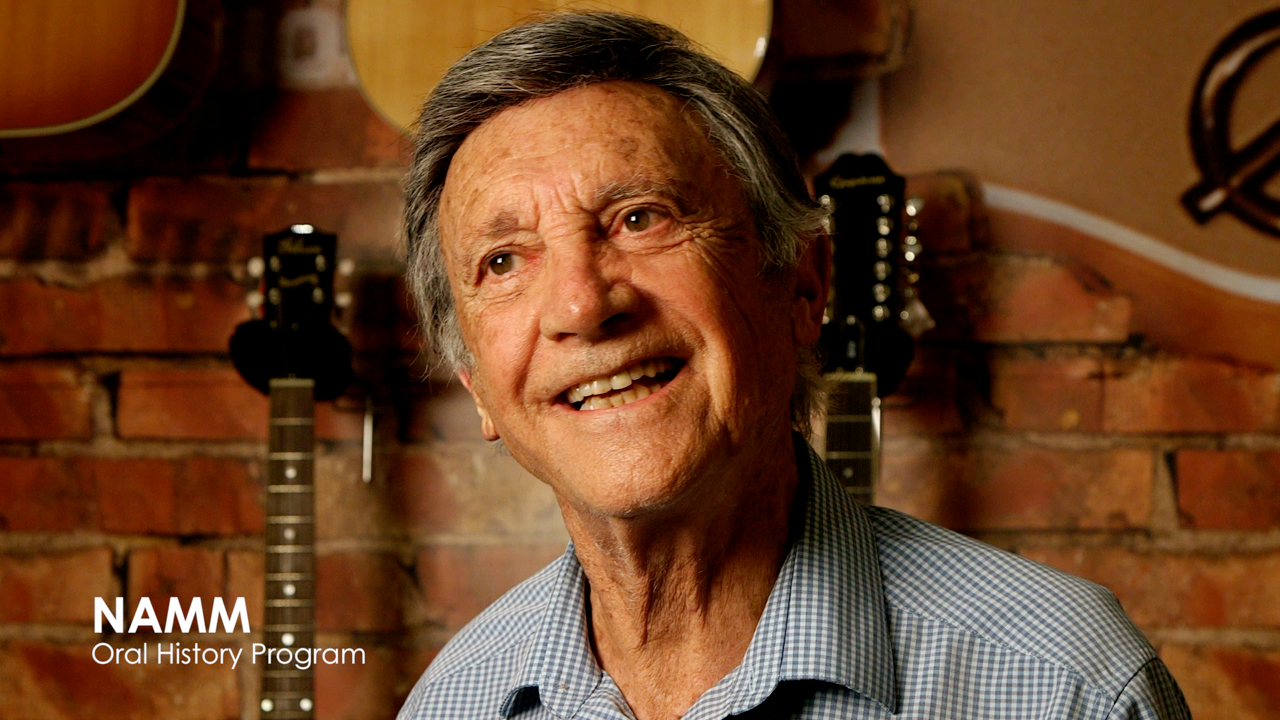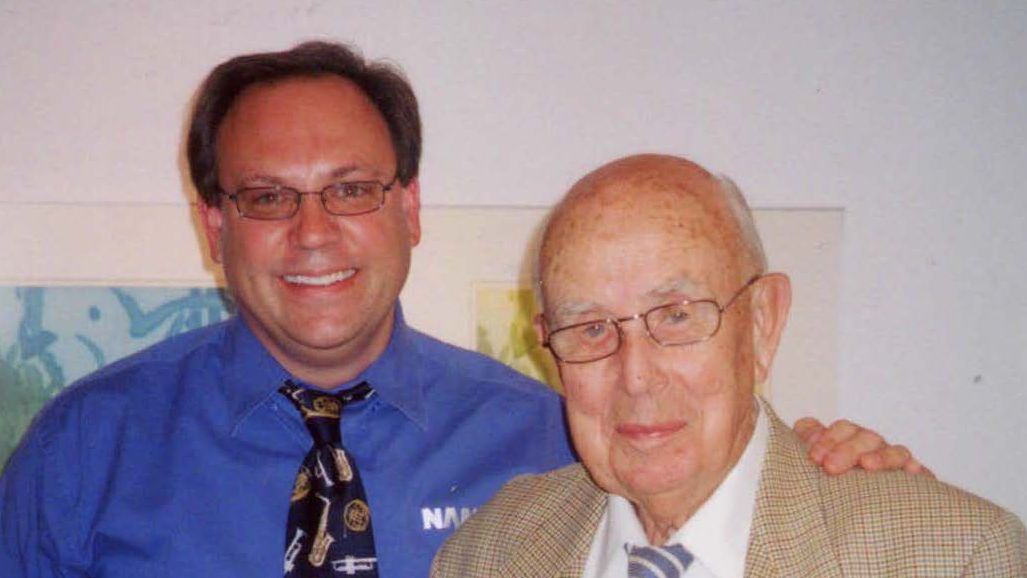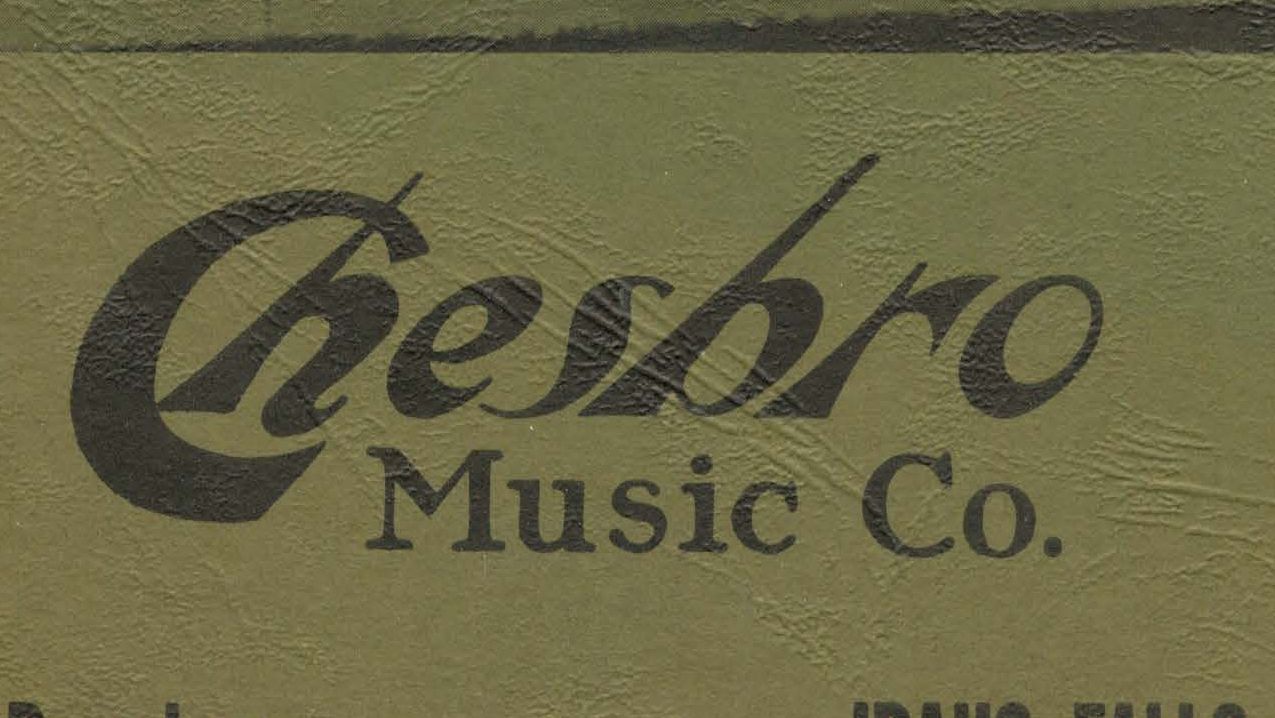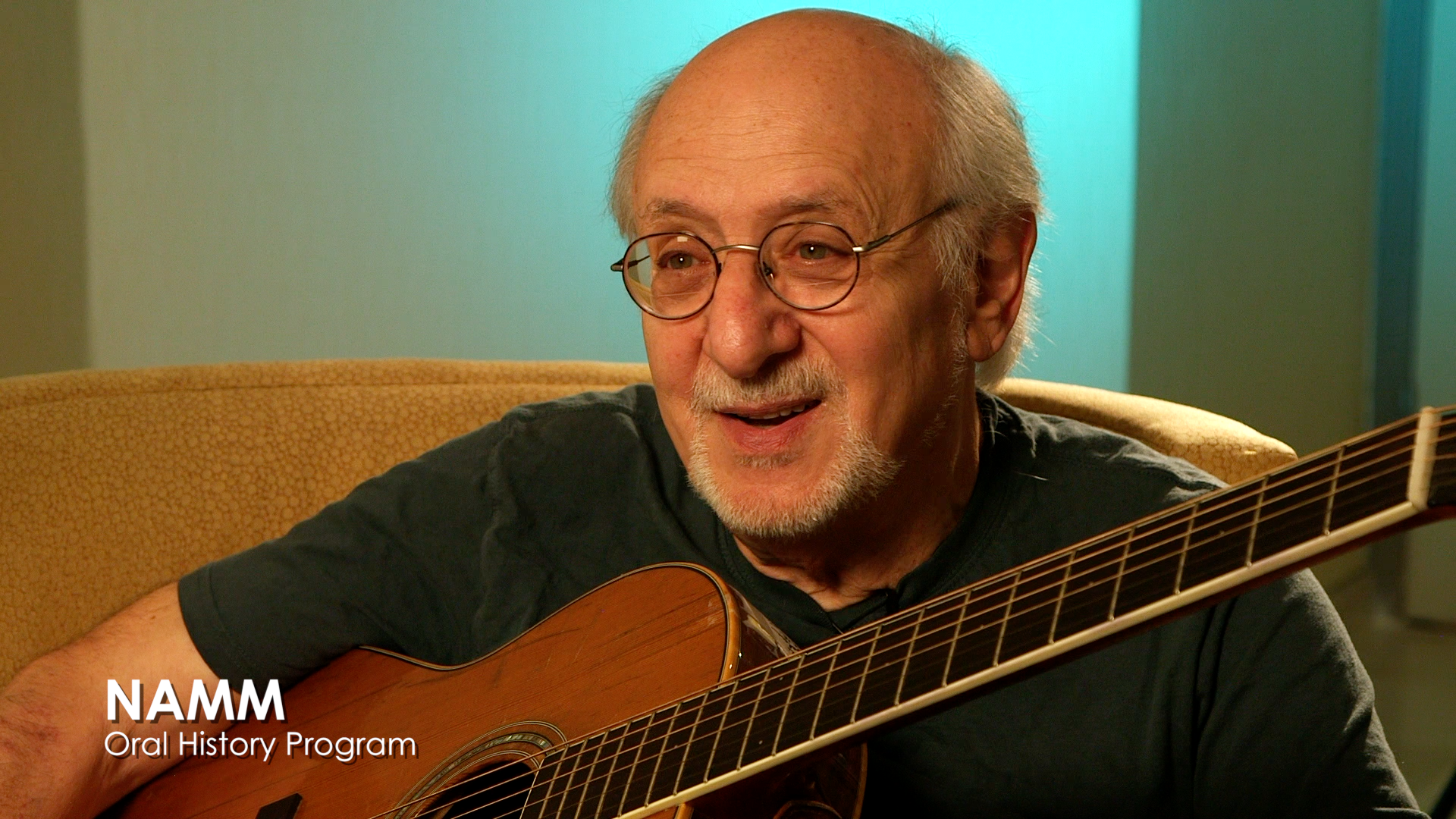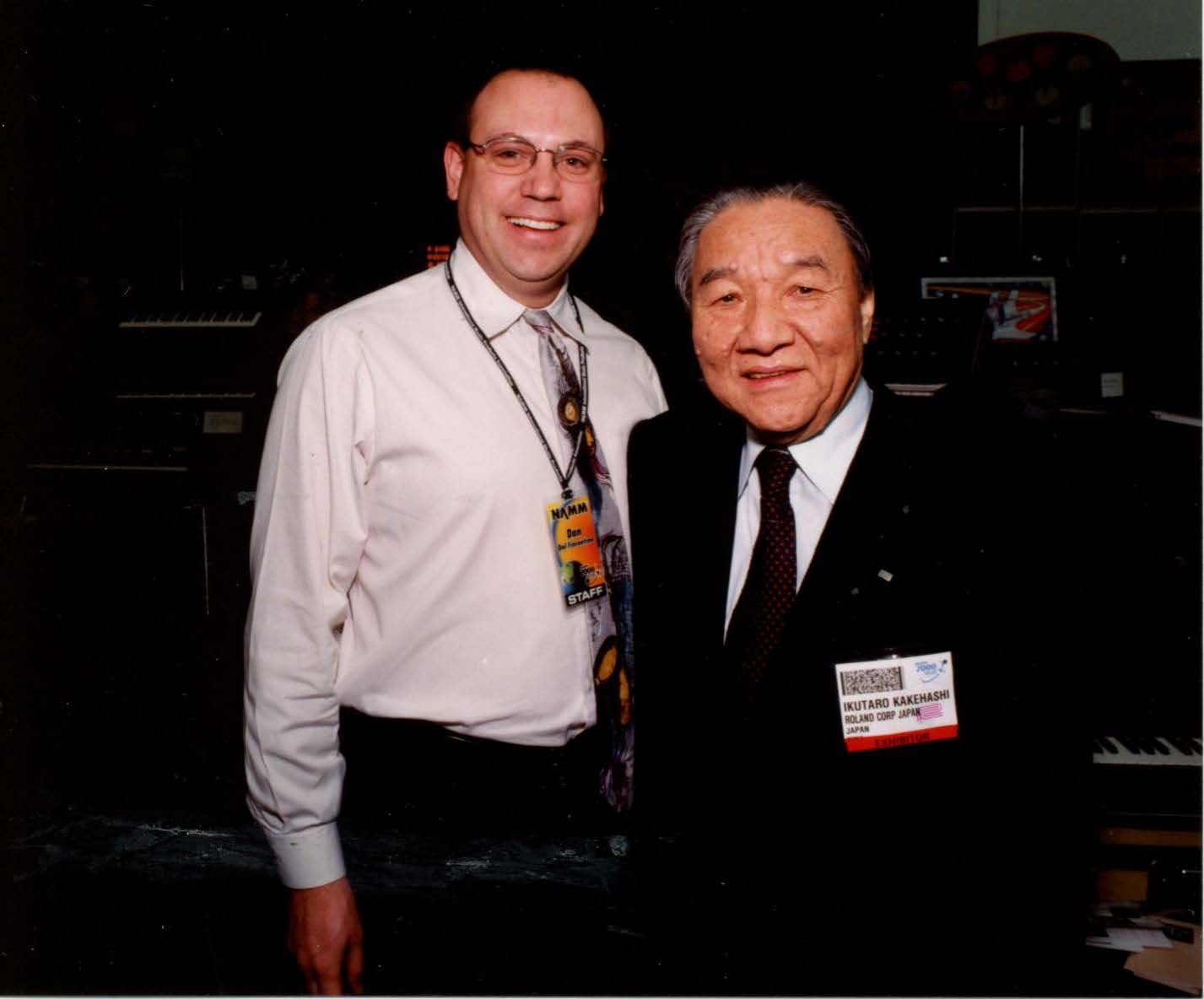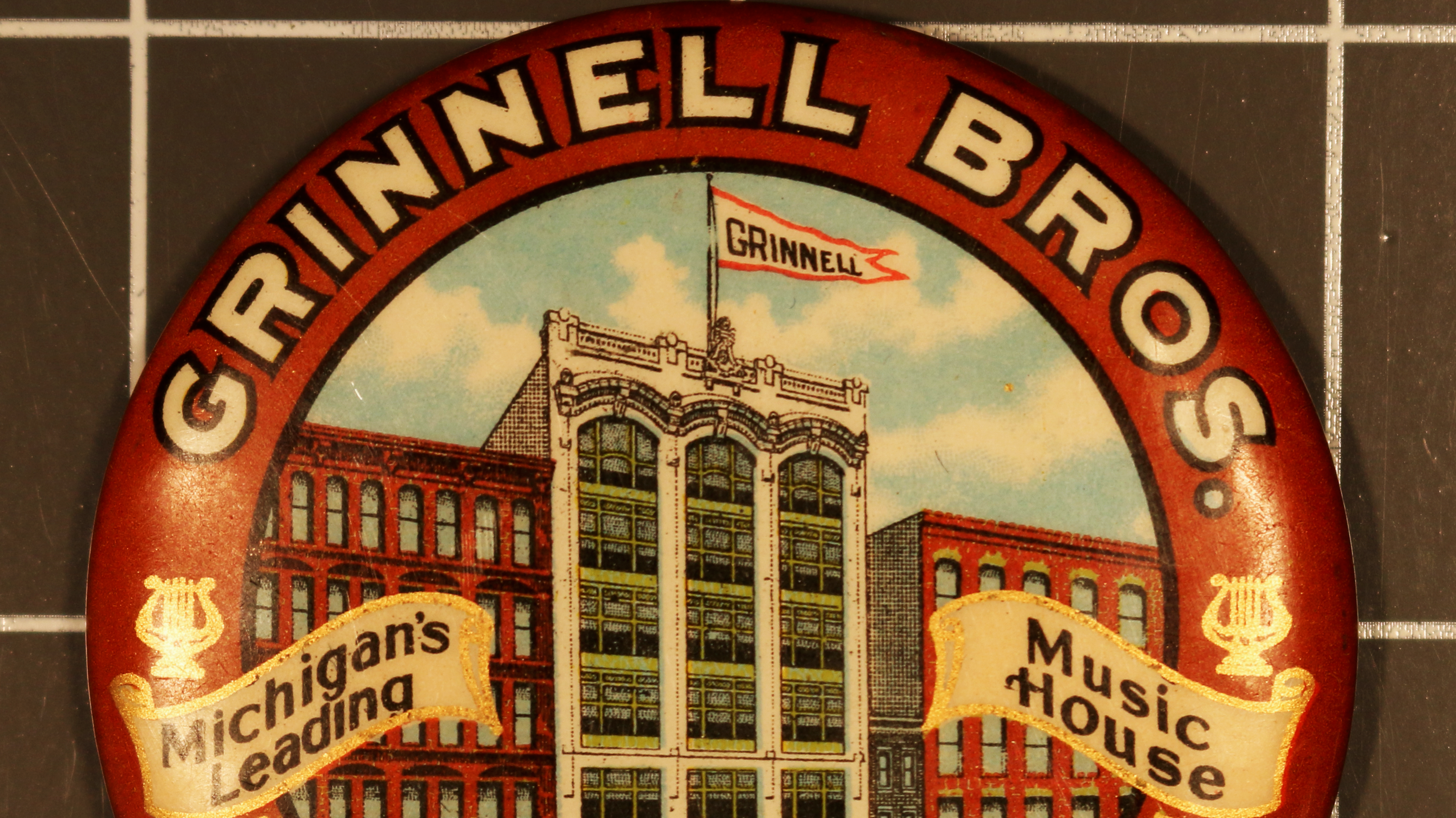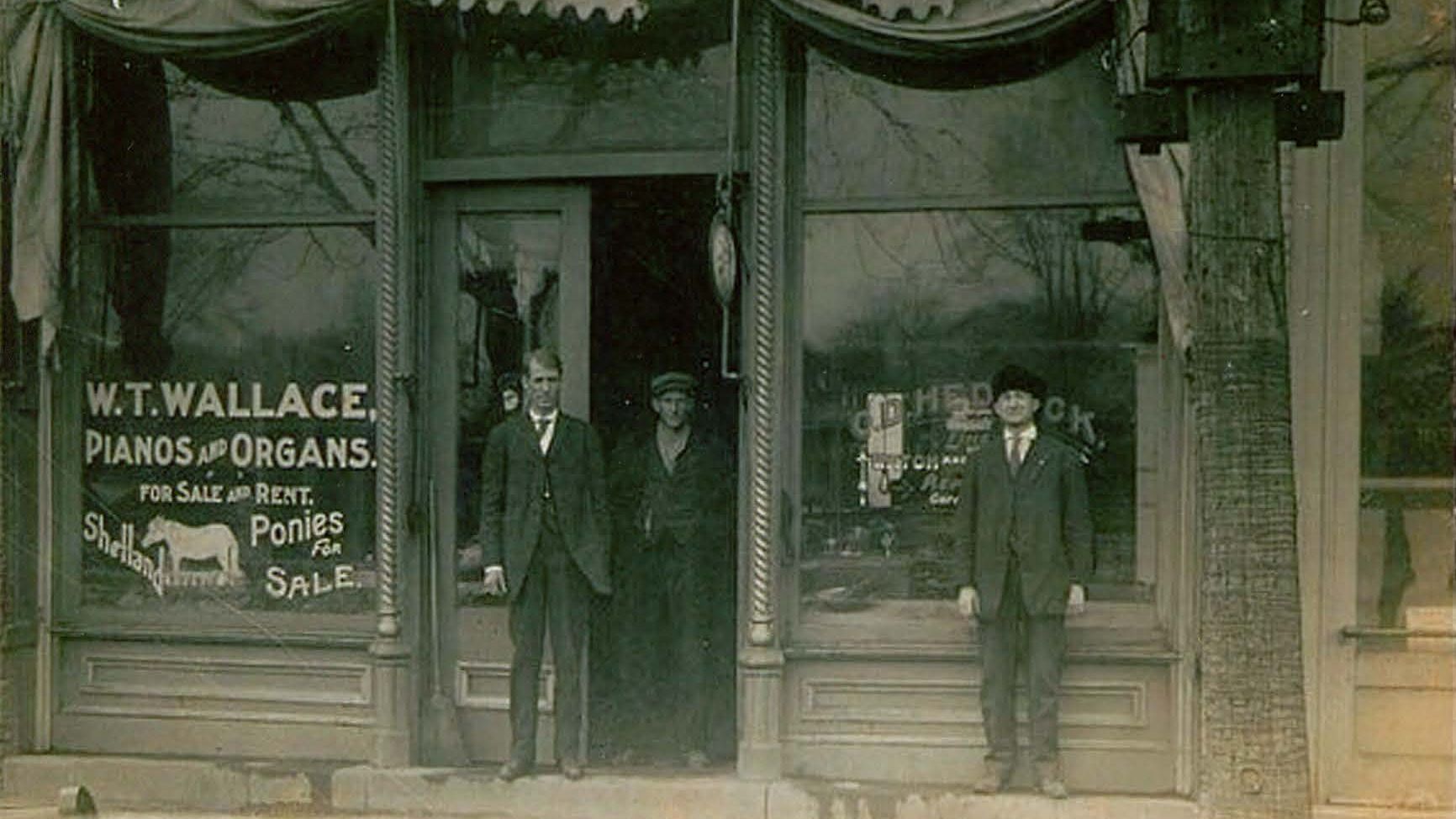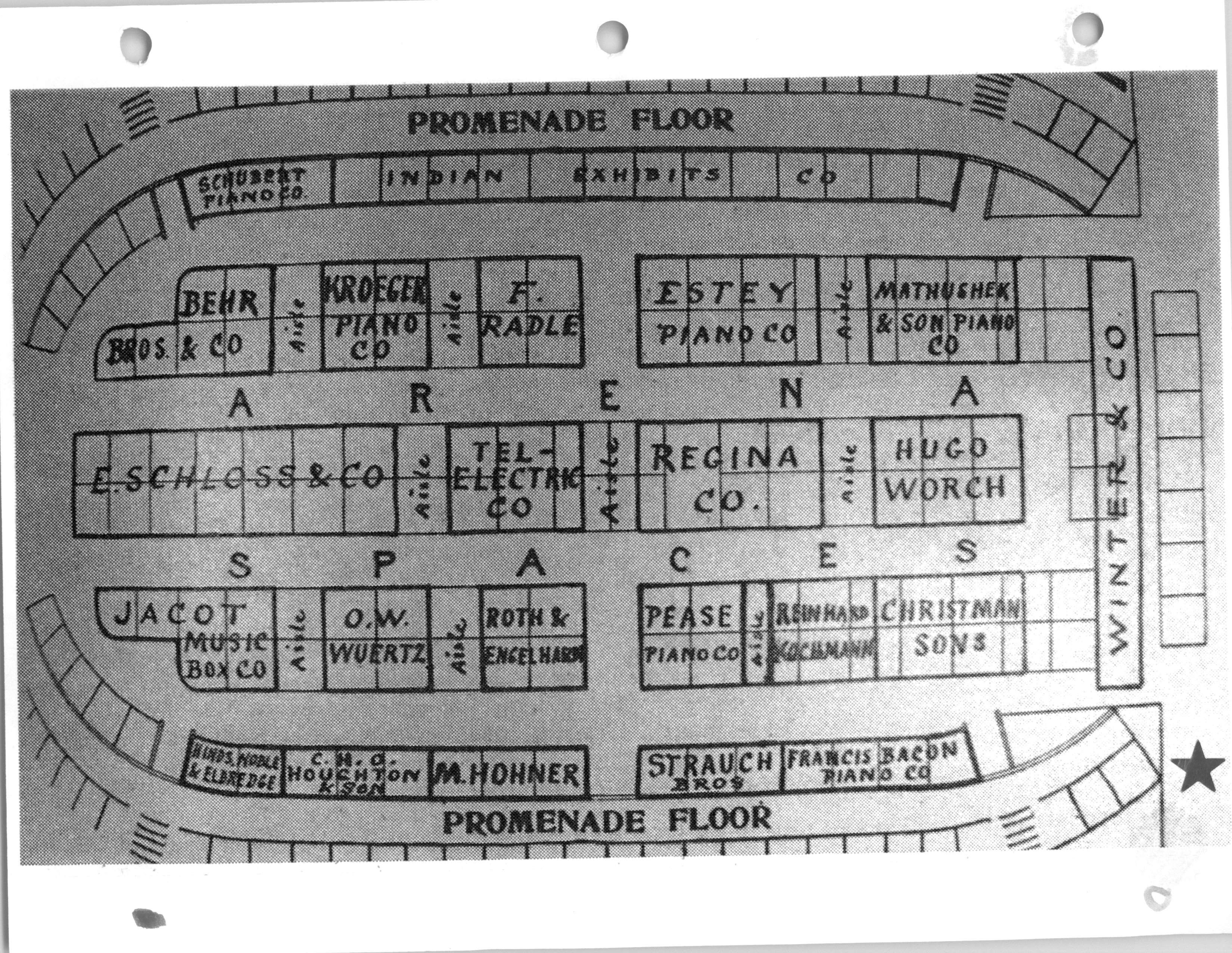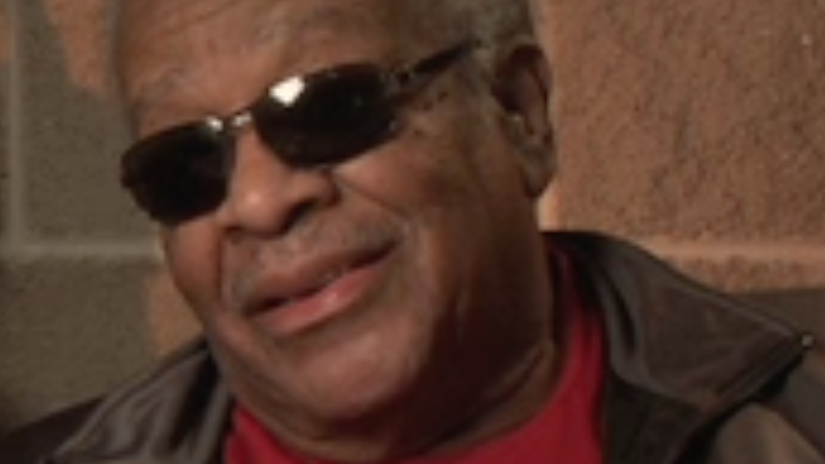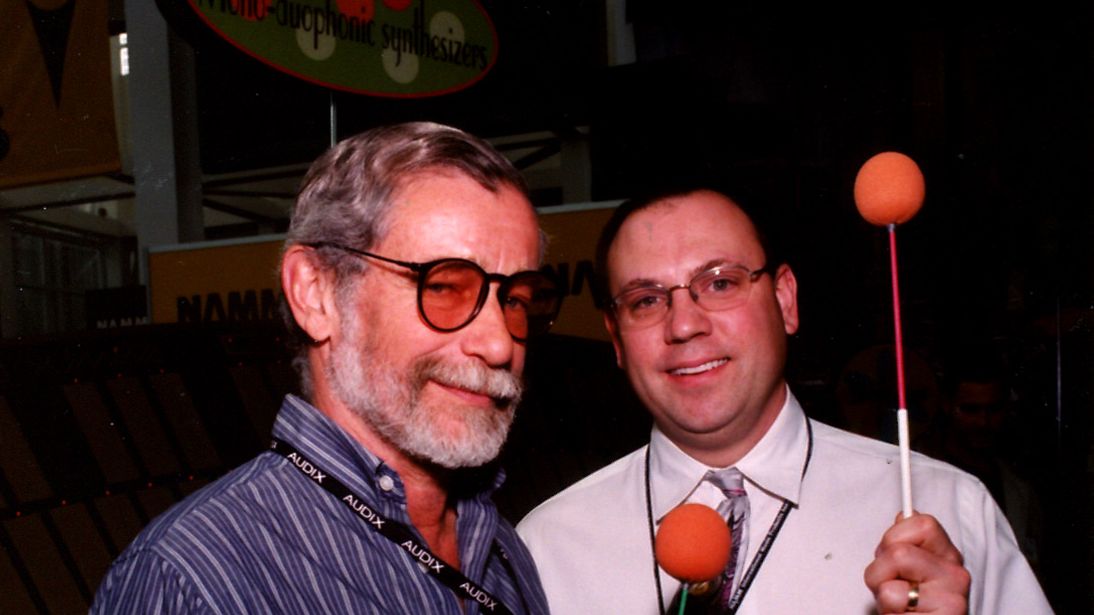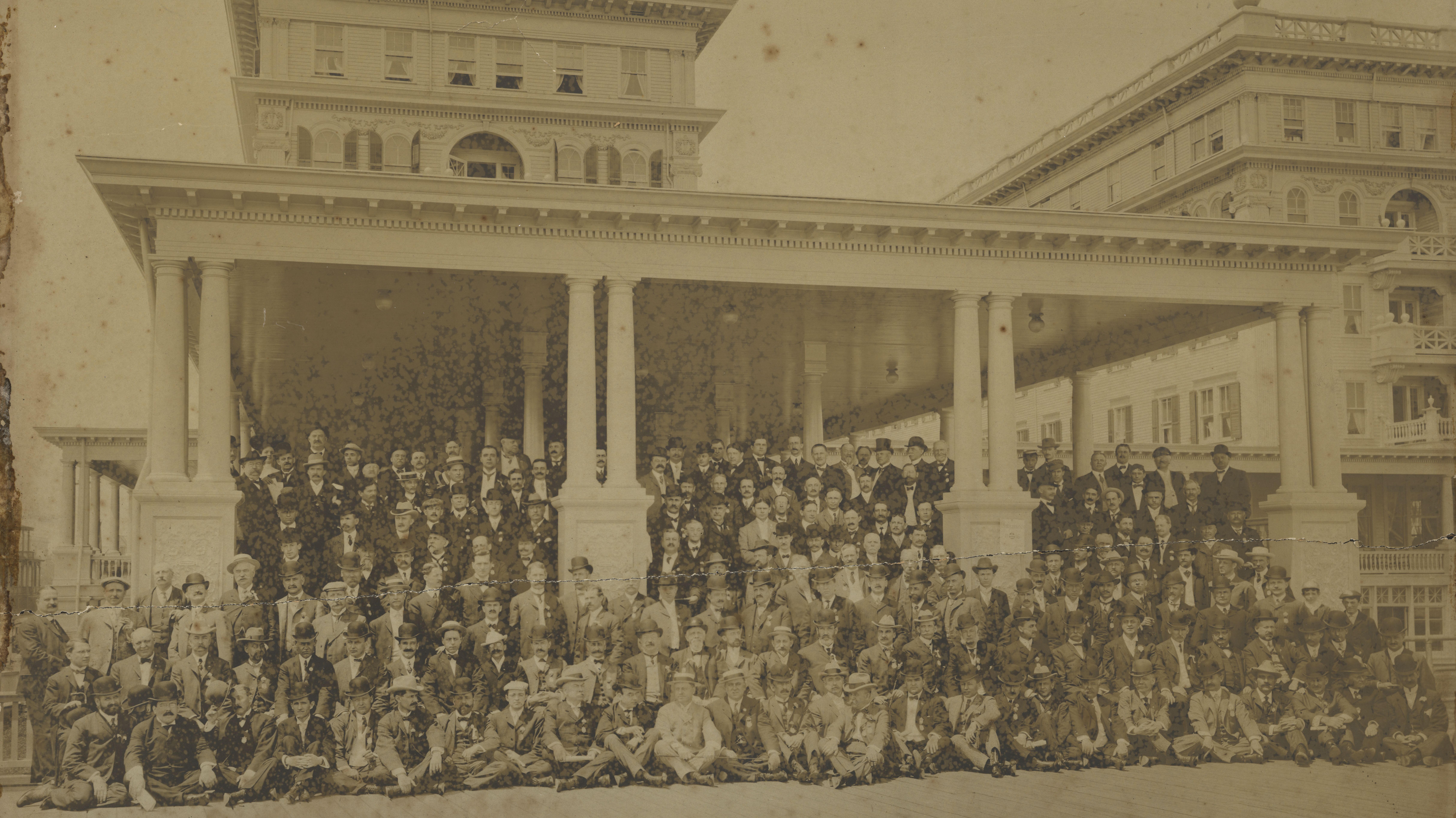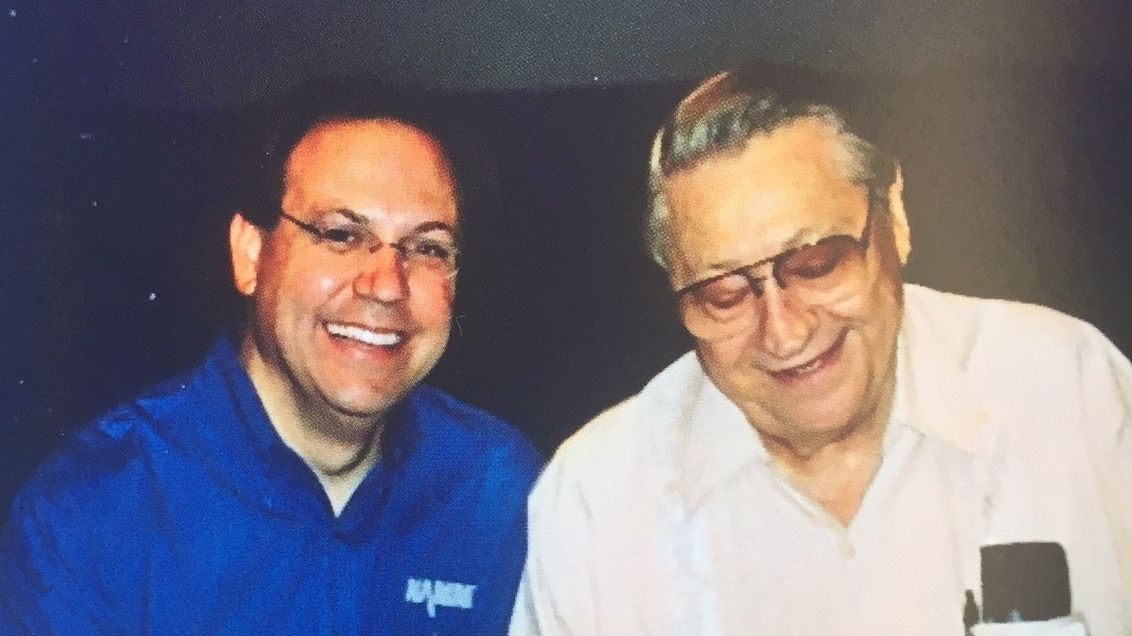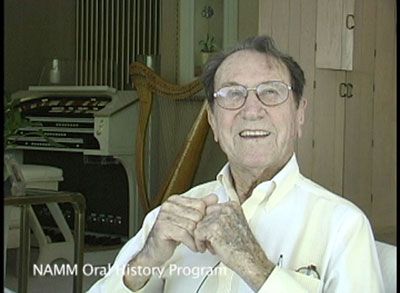All Blog Posts
Back in 2008, I set out on a quest when it became clear that the NAMM Oral History program did not yet include many DJ equipment manufacturers. I contacted several NAMM member companies, including Gemini Sound. Each call resulted in basically the same response
Right up the street from my teenage home was the home of a lady, who for several weeks in a row had a garage sale. Her children had moved out and no longer wanted many of their childhood belongings. I do not recall her name, but I think of her often as she, unbeknownst to her, provided me with a number of my prized musical possessions.
In many ways, I feel fortunate to have interviewed the Spanish composer, Luis de Pablo.
The interview took place just a month before the pandemic put a halt to my travels in 2020, during which time Maestro de Pablo passed away at the age of 91.
What always struck me about Rebecca was her knowledge of musical instruments and her kindness to share that information. And while I thought she knew it all, she was always reading articles and books to gain even more understanding of the instruments she repaired and the company history behind each of them.
Whenever I think of the notion of six degrees of separation, I always think of George Gershwin! The great American composer passed away at the age of 38 back in 1937 (thirty years before I was born) and yet because of my interview with songwriter Burton Lane, I am only one degree away from Mr. Gershwin!
In 2018, Songwriter Allee Willis shared how growing up near Motown inspired her amazing career as a songwriter. In this program that originally aired during the 2021 NAMM Believe in Music Week, Dan and Suzanne Del Fiorentino share a few stories of their visit with Allee at her home.
The NAMM Resource Center is home to one of the largest repositories of artifacts that document not only the history of NAMM itself but also preserve a rich and diverse history of music products and its related fields. From instruments to product advertisements, retail storefront photos, and articles documenting innovations and sales trends, the NAMM archives are a great source of information for the industry.
Robert (Bob) S. Johnson represented the era of The NAMM Show when simple displays were the norm, which typically included a few instruments and an order book. In the early days, exhibitors displayed their goods first in hotel rooms, over time expanding into larger ballrooms before moving to the convention centers of today. Bob proudly represented the William Lewis & Son violin company for years.
After reading several publications on Leo Fender’s career, it was a refreshing treat to hear about the man behind the workbench when Mrs. Phyllis Fender sat down for her NAMM Oral History interview in 2003. She recalled her late husband’s passion for his work and how he would wake up in the middle of the night with an idea. She spoke of their marriage, his love of ice cream, and the illness that took him from her in 1991. Phyllis was the proud keeper of his flame, providing presentations about him whenever she was asked and standing for hours at a time at The NAMM Show answering questions from those who admired her husband’s contributions to music.
Twenty-one years ago, in July 1999, I called music legend Barney Kessel who despite never viewing himself as an icon is certainly one of the greats. I had interviewed him years earlier for a radio show I hosted in the Bay Area but had since lost the original tape. This time around, I called just to let him know he was still being remembered for the amazing music he provided to us on records, television, and in the movies.
You must have a favorite music store, everyone does. The NAMM Resource Center wants to see it!
It appeared that the only way for me to capture an interview with Walter Fuller was to drive to his home in an unincorporated area of San Diego, pick him up and take him 40 miles north to the NAMM headquarters building and back home again.
The people of our music products industry are like a sports team, made up of some of the most passionate and talented players who share common goals, drive, and ideals. One such member of this particular team was William 'Bill' Reglein who embraced the goal to bring music to everyone who has a desire to play because the benefits are endless. We are proud when a child makes their first sound on an instrument and prouder still when they learn to express themselves with music. One day when a list is compiled of this amazing team’s coaches, look for Bill’s name because it will be there...in bold.
When you hear “Oh, Pretty Woman” by Roy Orbison, you’re hearing Buddy Harman on drums!
When you hear “Cathy’s Clown” by the Everly Brothers, you’re hearing Buddy on drums.
When you hear the light brushwork on Patsy Cline’s “Crazy”, you’re hearing Buddy.
When you hear “Little Sister” by Elvis Presley you are hearing…well, you get the point! It’s Buddy Harman on drums!
Toward the end of 2018 the Resource Center was requested to assist with some research to assist author, Dave Hunter, in providing an overview of the history of guitars as they appeared at The NAMM Show. Working as a NAMM Archivist and Oral History Coordinator at the time, it was an exciting opportunity to spend some time in our extensive archives in NAMM headquarters looking for resources that demonstrated the growth of the guitar representation at The NAMM Show.
I wonder if you will listen to the Yes hit song “Owner of a Lonely Heart” the same way after you learn where the lyrics were written. During his NAMM Oral History interview, Trevor Rabin, the songwriter, and guitarist for the band revealed that he had the song’s musical hook in his mind for a while before the lyrics came to him.
We are very pleased to have documented the longevity of Amro Music in Memphis, Tennessee. With the recent donation of an audio recording of the store’s founder, the NAMM Oral History Program now contains four generations of owners!
Since I was an early teen, I wanted to meet a bongo man named Preston Epps. I was first made aware of him when I was about 13 years old, sitting on the floor of my uncle's house and listening to records. My uncle played several of his 45s for me that he had kept since he was about my age. I recall watching the label spin around and around while I listened to some of the coolest music I had ever heard! One such record was “Bongo Rock” by Preston Epps. I recall thinking, "It sure would be nice to meet that man." Fast forward to my 30s when I was conducting interviews for NAMM, I asked several friends if they could help me locate Mr. Epps and to my great surprise, I not only got to interview him, but we became friends.
Record companies seemed to be quick to jump on the bandwagon for instrumental trends in the early 1950s. The combination of the waning popularity of big bands and a large cache of powerful musicians still under contract, record companies such as RCA were looking for every opportunity to take advantage of the next big musical fad. Trends came and went during this time, such as the exotica sounds made famous by Martin Denny and the cool lounge style of Les Baxter. Right in the middle of this period, Latin marimba player Manny Lopez was asked if he would put a full album together of ch cha cha songs. He did and another popular instrument trend promptly swept the country.
In November of 2011, the United Nations Educational, Scientific and Cultural Organization (UNESCO) officially named April 30 as International Jazz Day. The idea that an organization as revered as UNESCO, which can trace its lineage back to the League of Nations and influences projects around the globe include the conservation and protection of world heritage sites like Grand Canyon National Park, the city of Venice and its Lagoon, and the Taj Mahal, recognizes the significant impact of Jazz music on society is something all musicians should be proud of.
Each NAMM member has a story to tell and it has been the mission of NAMM’s Resource Center to capture these stories. For the last 19 years, NAMM has been actively archiving the stories of our industry in an effort to preserve these accounts for future generations. In honor of World Storytelling Day we are providing a background on the Oral History Collection and highlighting some memorable stories we’ve gathered.
The NAMM community and musicians everywhere are mourning the loss of Hal Blaine, known as the world’s most recorded drummer, who passed away at the age of 90 on March 11, 2019. Hal was a fixture within the NAMM ecosystem, often spotted at a NAMM Show booth talking with people for as long as they wanted. Hal also was extremely passionate about the work of the Museum of Making Music in Carlsbad, California. Shortly after the museum first opened, Hal, volunteered not only his time, but his expertise to speak to guests at a drum exhibition and by the end of the event, Hal even left behind one of his own drum kits for other patrons to enjoy. Hal was a friend to all who will be dearly missed.
Mardi Gras is a tradition of indulgence in the days leading up to the beginning of Lent, a period of time before Easter, wherein many sects of Christianity, followers practice fasting. Often associated with consuming in excess, Mardi Gras is celebrated throughout the world and in America, has found its home in New Orleans, Louisiana. The first American Mardi Gras celebration took place near modern-day New Orleans on March 3, 1699, and now 320 years later, the Oral History Collection celebrates Mardi Gras by featuring some great interviews from The Big Easy.
Young musicians often dream of playing sold-out venues all over the globe and some may say there is no venue more prestigious than the White House. Since the White House became the official residence for sitting U.S. Presidents in 1800, music has been at the heart of celebrations within this iconic home. Whether one hears the brass of the “President’s Own” United States Marine marching band or the tinkling of the ivories on the picturesque Steinway piano located in the East Room, the Presidential domain has the potential to be one of the most coveted and exclusive venues in the world.
With another NAMM Show in the books, many of us now have a fire lit under our feet to continue innovating and pushing the limits in the music products industry. It seems apt that the close of the show springboards us into February, which coincides with National Women’s Inventors Month. This provides a wonderful opportunity to recognize some of the women who have made an impact in the Science, Technology, Engineering and Mathematics (STEM) fields which are the driving forces in invention and innovation.
February marks African American History month and The Music History Project, a NAMM sponsored podcast, took an opportunity to highlight a few of the stories of adversity by those directly involved with the civil rights movement on the 1950s and 1960s in “Ep. 16 – Music in Civil Rights Movement” (originally released February 1, 2018).
When people tune in to watch one of the largest sporting events on television, the Super Bowl, they associate this “unofficial” holiday with an often-cold winter Sunday featuring good food, premier advertising experiences, and top-performing athletes battling it out on the gridiron.
By including the name of a musical instrument such as piano, banjo, and clarinet in his song titles, Irving Berlin became an advocate and promoter of our industry!
Legendary television journalist Mike Wallace, who has a long-standing gig on 60 Minutes, once referred to the thrilling experience of interviewing iconic figures by saying “I sat toe to toe with some incredible people.”
Most people may not associate the silent movies with music, but in fact, there were several strong correlations. Most films in the Golden Age of the silent movie (1894-1929) had organists, and sometimes, even full orchestras playing along to the images up on the screen.
An amazingly "Cool Item from the Archives" comes in the form of a collection of old magazines, predominately, copies of TV Guide, that were donated to the NAMM Resource Center Archives by Henry Grossman of Grossman Music.
The delivery of mail prior to the conclusion of the Revolutionary War was a bit chaotic in America, often with stampless letters being delivered by hand and the cost associated with delivery being paid by the recipients of the mail. However, after the first postmaster general was appointed by Benjamin Franklin in 1775, the modern postal service began to take shape. The first “official” postage stamp was utilized in America on July 1,1847 and was issued by the U.S. government post office and eventually the use of stamps was made mandatory by 1855.
A “Cool Item From the Archives” comes in the form of a special collection of music and music products related postcards. This collection of both brand new and used postcards were often used as a form of advertising by manufacturers and retailers alike.
First Day Covers are produced by postal services as a way to create a commemorative issue to honor the release of a newly created stamp. The term “First Day Cover” refers specifically to an envelope or card that includes the newly issued stamp, an inked stamp canceling the postage stamp, and a cachet or image that provides more information about the stamp.
The practice of producing and distributing trade cards to inform and generate new customers gained popularity at the end of the 17th century in Paris and London. These cards were designed to provide customers with information including the business name, address or description of where to find the shop prior to the existence of formal addresses, and a short explanation of products sold by the tradesman.
Another cool item from the collection is an entire subset of material from the Henry Z. Steinway Philately Special Collection. In an earlier blog, we featured the pictorial envelopes from this collection, and the collection highlights Henry’s immense interest in philately or the collection of a study of postage stamps. While we have broadened the use of this term to include Henry’s vast collection of envelopes, postcard, and trade cards, Henry kept one theme ever-present in his quest to expand his collection, the new acquisition must be tied to music.
Contained within the NAMM Resource Center Archives is a collection that holds a special place in our hearts. The aptly named Edna Mae Burnam Special Collection is a tribute to Composer, Edna Mae Burnam. The unique feature of this particular collection of sheet music is that each title contains one common factor; the presence of an instrument within the title. While Enda Mae’s own compositions are a part of this collection, the holdings are not limited to just her work, ranging in titles that pay homage to instruments from accordions to ukulele’s and nearly everything in between. With nearly 100 different pieces of music within the Edna Mae Burnam Special Collection, it was an enjoyable challenge to select a cross-section of pieces to represent this collection, however, we made sure to include a selection from Mrs. Burnam herself; "An Old Upright Organ Plays 'Abide With Me' was arranged by Edna Mae and is the first image associated with this blog. We hope you enjoy it as much as we do!
Envelopes are an item in our lives that often get overlooked. We handle them nearly every day despite being in an ever-growing “paperless” world and yet, many times, we don’t even think twice about this simple and effective business tool. While it doesn’t appear that the exact origins of the envelope can be pinpointed in history, according to the Smithsonian the envelope makes appearances back in 1200 B.C. China as well as ancient Egypt and while we wish here in the NAMM Resource Center that we had our hands on some of these oldest versions of the envelope, we are happy to report we have a substantial collection that dates back to the 1840s that were donated by Henry Z. Steinway as part of the Steinway Philately Special Collection.
It is a special day for the NAMM Oral History collection and for me personally! Thanks to my amazing staff of Elizabeth Dale and Mike Mullens, and our volunteer Suzanne Glasnapp, we have completed a task that has been in the works for several years. Today, the last of the interviews I completed in my radio days, before working at NAMM, have been donated, digitized, and included within the NAMM collection. This means that every interview I have captured since I was 15 years old is all in this library archive, all 4,000 plus!
There are those we meet for which we feel an immediate connection. This was the case when I first met Grassella Oliphant and he later told me that he felt the same way. There was something special about Grass, both as a person and when you heard him play the drums. In the early 1960's he performed for Sarah Vaughan who remarked that Grass was nice and easy on the brushes which allowed her the time and space to explore the song. As I said, Grass was special.
As most of you know, I am a fan! I truly do get excited about each interview because I appreciate and respect those who have given us music! Along the way, I began gathering selfies (long before there was such a term) and the very first was with Milt Hinton when I was only 15. These selfies have come to be affectionately known as “Dan and...”. Later, while in my 20s, I got to meet Jonah Jones and we posed for a photo where he pointed to me, thus the beginning of the now-famous pose of mine, 'The Point!' Over the years I have pointed and was pointed to in many photos. Since I am often asked about who was in the first pointing photo, I wanted to share it, along with a few other personal highlights.
On August 18, 2018, the NAMM Oral History team was invited to attend the Crown International employee carry-in! It was an honor as the 200 plus people who arrived were all past employees of the company that had officially closed a month before the event. Folks from all divisions, and at all levels within the factory, came to see each other. As an outside observer, it appeared to me to be a big
Trummy Young was the very first person I ever interviewed. His kindness and fascinating life captivated me and his interview became the foundation of my passion for capturing the stories of those in the music world, which is now my career, my dream job. As I write this blog, August 2018, it’s likely that I will record my 4,000 interview this fall. And to think, my first interview was when I was
Arne Berg came into my life thanks to Yoshi Abe, the engineer behind the TEAC reel to reel recorder. When Abe-San was interviewed, he informed me that fellow audio engineer, Arne Berg, was living just north of me in Southern California. Budd Johnson was a coworker of Arne’s, and after several years of effort and the wonderful help of Patty Johnson (Budd’s wife), I was finally able to connect with and interview Mr. Berg.
After interviewing thousands of passionate people in the music products industry, I wonder if when you listen to your favorite music you hear what I hear?
The company was once referred to as The Mighty Wurlitzer! Perhaps this was because of the strength of its products, renowned training program, and educational efforts. For me, the secret behind the power of the Wurlitzer Company was its people!
One important element of the NAMM Oral History collection is that by capturing interviews with several people who worked at one company at different times and in different positions, we can gain a larger portrait of that company and its products that could not be ascertained by merely one interview on the topic.
Howard Ungerleider won the Parnelli Visionary Award in 2014 for a good reason, he is a pioneer in professional lighting! What struck me during his 2018 NAMM Oral History interview was just how influential his ideas, designs, and innovations have had on the Live Sound industry.
During the 2000 NAMM Summer Show in Nashville, there was a small display of vintage electronic instruments. Among the items, people stopped to stare at and even get their photograph taken with, was an early Fairlight!
The following is a list of all locations of dates for past NAMM shows from 1901 to the present day. A downloadable PDF version of this list is also below.
This special video was created by members of the NAMM staff to honor Hal Blaine, the studio drummer who was recently presented the Grammy Life Time Achievement Award. Congratulations Hal! If you'd like to see more about Hal Blaine, click here to check out the segment from our 2002 interview with him.
The NAMM archives recently received a generous donation of multiple vintage C. Meisel catalogs from former Meisel Accessories LLC President, Neil Lilien. One catalog of special interest in Neil’s donation dates back to 1898!
In 1958 a photographer by the name of Art Kane was hired by Esquire magazine with the intention of snapping a photo that encapsulated the “golden age of jazz” and the result has been deemed “A Great Day in Harlem”. Inspired by the photo and collection of iconic jazz musicians, filmmaker Jean Bach created the documentary “A Great Day in Harlem” which later went on to be nominated for the 1995 Academy Award for Best Documentary.
Specs was a drummer’s drummer! When I first sat down with Ed Shaughnessy (1929-2013) who played drums for The Tonight Show starring Johnny Carson, all Ed wanted to talk about was the lessons he learned from Specs Powell!
Specs was also a friend’s friend! And I was humbled and honored to have known him!
Each time my wife and I take a walk in a new place, we take a moment to pick up a pebble to remember the experience. As I reflect back on some of the influential people that I have had the privilege to meet and know, I thought of this concept: that learning a nugget of knowledge from these mentors is a lot like picking up a pebble. Each time I learn something new, I gain another pebble of wisdom. Just last night, I learned of the passing of jazz journalist and dear friend, Cam Miller, who I certainly picked up several pebbles of wisdom from over the years.
When Santa Cruz Guitar Company celebrated its 40th anniversary in September 2016, the NAMM Oral History cameras were there! It was an honor to take part in the celebration as we were able to capture several great interviews for our collection.
Over the years we have been able to document the history of many important NAMM member companies by collecting several different accounts of its beginnings, focus within the industry, and impact. Among those that have become especially rewarding to the archive are companies where the founders or early employees begin the story and more recent employees or owners can bring that story to the present. Such is the case of Rodgers Organ Company.
A love of jazz first brought Eric and me together. We worked together for several years in the 1990s, but even after that working relationship ended, our friendship grew. He knew all about the bebop era and I knew about the swing era, and together we covered 50 years of jazz and explored all the other eras together.
Back in the fall of 2016, I spent a most enjoyable day at Muncie Music with owner Dave Helms. I was warmly welcomed by the staff while Dave was on the road calling on band directors. When he later arrived, I was able to capture four interviews including one with him and his longest-running employee, Joan (pronounced Jo-Ann) White.
What I hear is a very hard to reproduce synthesizer sound on Stevie Wonder's hit "Boogie On Ragge Women". The electric musical instrument used on this song was The Original New Timbral Orchestra or "TONTO" and was the engineering work of Malcolm Cecil and Bob Margouleff.
The opening flute solo on the rock classic "Going Up the Country" by Canned Heat was performed by studio musician Jim Horn. As a young saxophonist, I noticed Jim's skillful musical talents on a number of my favorite recordings including Elvis Presley's Roustabout movie soundtrack and the Beach Boy's album Pet Sounds. I was taken by the wide range of sounds and feelings he could produce, both in rhythm and in tone.
Do you hear what I hear? I hear the songwriter Mike Stoller howling at the end of Big Mama Thorton's version (the very first recording of the song, before Elvis) of "Hound Dog." Mike and his partner, Jerry Leiber, who wrote the words, both were on hand for the recording session. In fact, Mike was playing the piano. When the rest of Big Mama's blues band howled out at the end of the record, like a yard of dogs barking, Mike joined in. Do you hear him? I hear his excitement of having a blues pioneer record his song, long before anyone thought of it as a rock and roll anthem.
Do you hear what I hear? It's a now-famous drum beat on "Surfin' USA" by the Beach Boys. Maybe it has been some time since you paid close attention to the driving drums, but take a listen, you might hear what I hear. I hear studio musician Frank De Vito. Frank played in New York jazz clubs in the 50s and worked with Elvis on his 1967 TV comeback special. His creativity didn't stop with playing, in fact, in 1971 he formed his own percussion company that produced a number of instruments he engineered himself. What I hear is a little different than the regular driving rock backbeat, I hear a little swing and a little blues. I also hear the talents of a very fine gentleman who just couldn't turn Elvis' offer of a cigar down, even if Frank didn't smoke. After all, the King did offer!
Professor Fritz Sennheiser had a deep interest in audio, long before he designed a tube voltmeter and his first microphone after World War II, which launched his company, Sennheiser Electronic. He was born in Berlin in 1912 and by the time he was ten, he was already building his first crystal radio set.
Nothing beats finding and purchasing a gem of a historical item in an online auction site and that is what we did just recently when the archives acquired an original 1965 Chesbro Music Co. catalog. While the catalog has some wear and tear as you would imagine due to it being over 50 years old, it is in great shape and fills in a gap that existed in our collection. This almost 400 page catalog list products from Accordions to Zither Strings and everything in between. The archives are extremely fortunate to acquire pieces like these and we continue to look to expand our collection of artifacts.
Among the interesting items in the NAMM Archival Collection are advertisements like this one that echoes of a bygone era.
When the radio became popular in the 1920s, it made sense that the local music store in a small town would choose to sell radios as a way to supplement their income and provide a service for their customers.
One element I enjoy capturing for the NAMM Oral History collection is the social aspects of the music that represents an artist. A rather complete example of this is the music and social times of Peter Yarrow.
No one I have ever interviewed embodied the wide-eyed excitement of a child and teamed it with the creative engineering of a world-class scientist like Ikutaro Kakehashi. Mr. K was passionate and full of gratitude for "being lucky enough" to design and develop musical instruments, which as he often pointed out, would be held in the hands of great musicians who would then make the world sound better!
Strange and delightful things happened the closer I got to the Dylan inner circle. When I interviewed Garth Hudson, I could not get over the depth of creativity sitting right in front of me. When my camerawoman and I arrived at the studio, I really did not know what to expect. Garth arrived and sat down to the Steinway and played serious classical works not often at the tips of one's fingers. It appeared that he took some time to adjust to the camera and lights, but knowing I was from NAMM and was there, in part, to gain his thoughts about the Lowrey Organ, Garth was carefully considering what to say and how to say it. It was an interview I will never forget.
Grinnell Brothers Music House was founded by Ira L. Grinnell in 1879 and was headquartered in Michigan. While this "Cool Item From the Archive" boasts 24 stores with their headquarters in a now designated historic building in Detroit, Michigan, Grinnell Brothers Music House continued to grow to include roughly 40 locations throughout the United States and Canada.
Our good friend, Herschel Green, recently sent in this amazing photo of the W.T. Wallace storefront that advertised the sale and rental of pianos, organs, and even Shetland ponies! While we do not have a lot of information about this store, like location or year in which the photo was taken, you can imagine that the three gentlemen pictured had their hands full helping supply their customers with all of their musical and equestrian needs.
The first annual convention and trade show was held in 1902 in the YMCA hall in Baltimore, Maryland. Here is the first show map floor that was released to help visitors find their way around the show.
The annual NAMM Tribute program is our industry’s chance to pause and remember those no longer with us. This special program includes the names and images of those who have passed away since our last gathering in Anaheim. This year’s program will begin at 5:30 pm on Thursday in front of the Yamaha Grand Plaza Stage outside of the convention center. With music and friends, we have a chance to reflect and remember. Please join us as our industry comes together to pay our respects.
Can you guess what the following companies have in common?
Fishman Transducers, Rudy’s Music, Kretzer Pianos, Emerson Flutes, QSC, Oberheim Electronics, ARP, Fazola Piano, Leslie Speakers, Moog Music, Dean Markley Strings, Donn Bennett Drum Shop, Shimamura Music, Sennheiser Electronics, and Carma Lou's House of Music...
I often wondered if you will be like me and listen to music or an instrument differently once you hear the story behind it.
Case in point: do you hear the tambourine in Motown hits such as "War" by Edwin Starr and "I Heard it Through the Grapevine" by Marvin Gaye? Take a listen for the tempo driving skills of Jack Ashford who was a session musician for the famed Detroit label during its glory days of the 1960s and 70s.
Don Buchla was among the most influential engineers in the early development of electronic music. His Buchla 100 was used by a long list of electronic composers who wanted to explore the sounds that were possible on this instrument. That list includes Morton Subotnick, Pauline Oliveros, and Gladys Krenek. In later years, his instruments were explored by a new generation of composers such as Suzanne Ciani. Along the way, Don continued to create units that inspired artists to make reality what was only in their minds and imagination.
NAMM was originally formed in 1901 and provided its first trade show the following year. There is little we have in our archives of those early years (perhaps the closing of the headquarters for two years during the Great Depression had something to do with that).
First and most importantly, it is a humbling statement that Scotty Moore was my friend! Long before I knew his name, I knew that sound! I could pick out his guitar licks on records that didn't even list his name on the jacket (expanded internet listings now give me confirmation). When I was ten, my mom took me to the big city library where I boldly asked the reference librarian who was playing the electric guitar behind Elvis.
I often wondered if you will be like me and listen to music or an instrument differently once you hear the story behind it.
Case in point: do you hear the Leslie speaker played alongside the Hammond B3 in hits such as "Green Onions"? Once you learn a bit more about Don Leslie and his passion for pipe organs, a sound he wanted to reproduce electronically, you may hear those sounds with a better understanding as to why Don used the Doppler effect by spinning his speaker cones to provide a more lively and engaging experience.
